|
Excellent advice is to start birding as soon as you open your door in the Parking Lot.
Don't wait to enter the Park itself! Some things (like Loggerhead Shrike, Black-tailed Jackrabbit, *Tropical Kingbird*, Bronzed Cowbird, Eurasian Collared-Dove, and Lesser Goldfinches
eating the seeds of the tropical sage) are sometimes easier picked up here than anywhere else in the Park! At dusk
and dawn watch for *Red-Crowned Parrots* (ABA countable!) travelling overhead
between Valley Nature Center and Llano Grande RV Park. Some springs they nest in the Park itself.

|
| This Pauraque was hatched in the Parking Lot! |
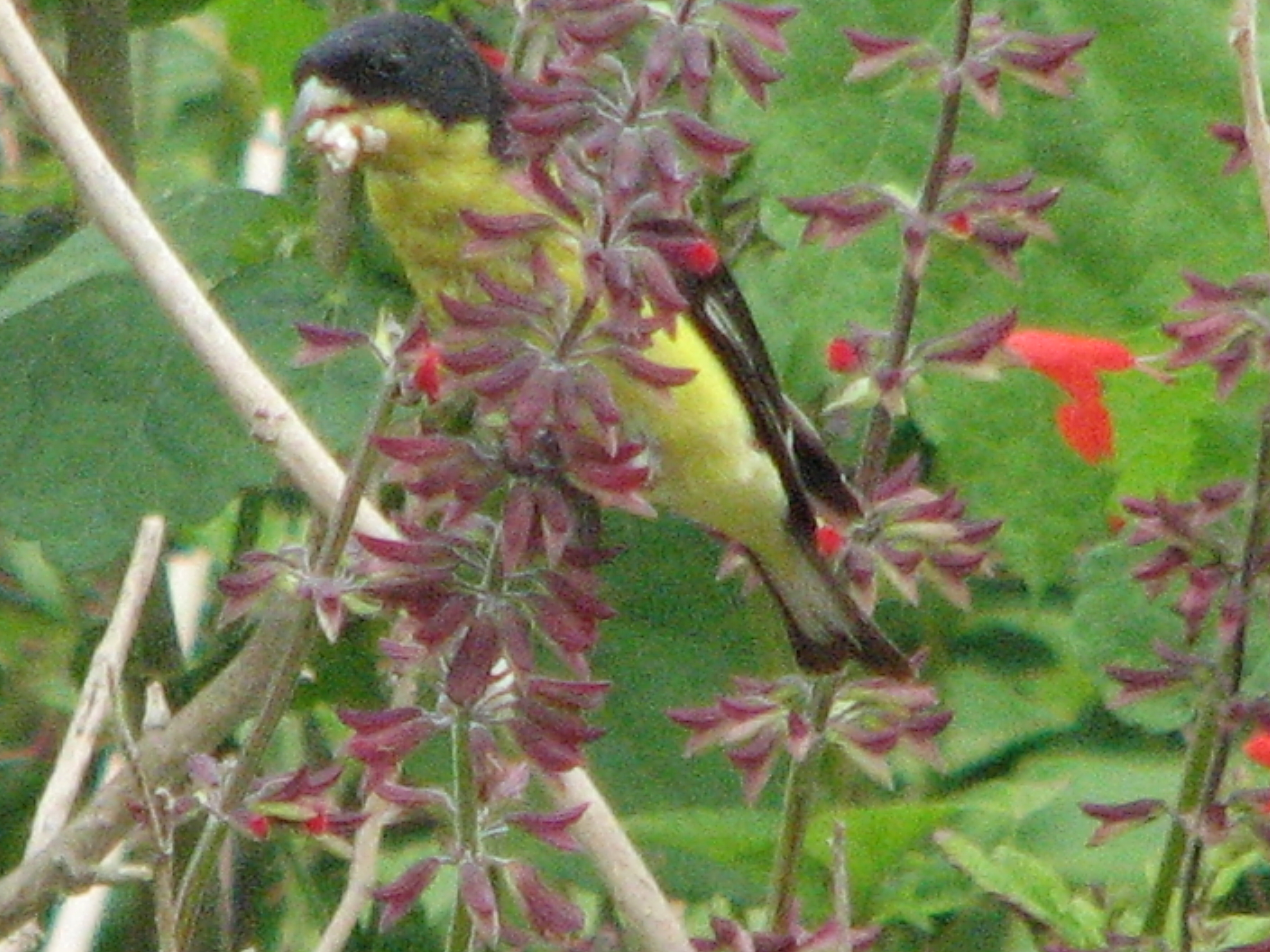
| That corner parking lot Hackberry (Palo Blanco) |
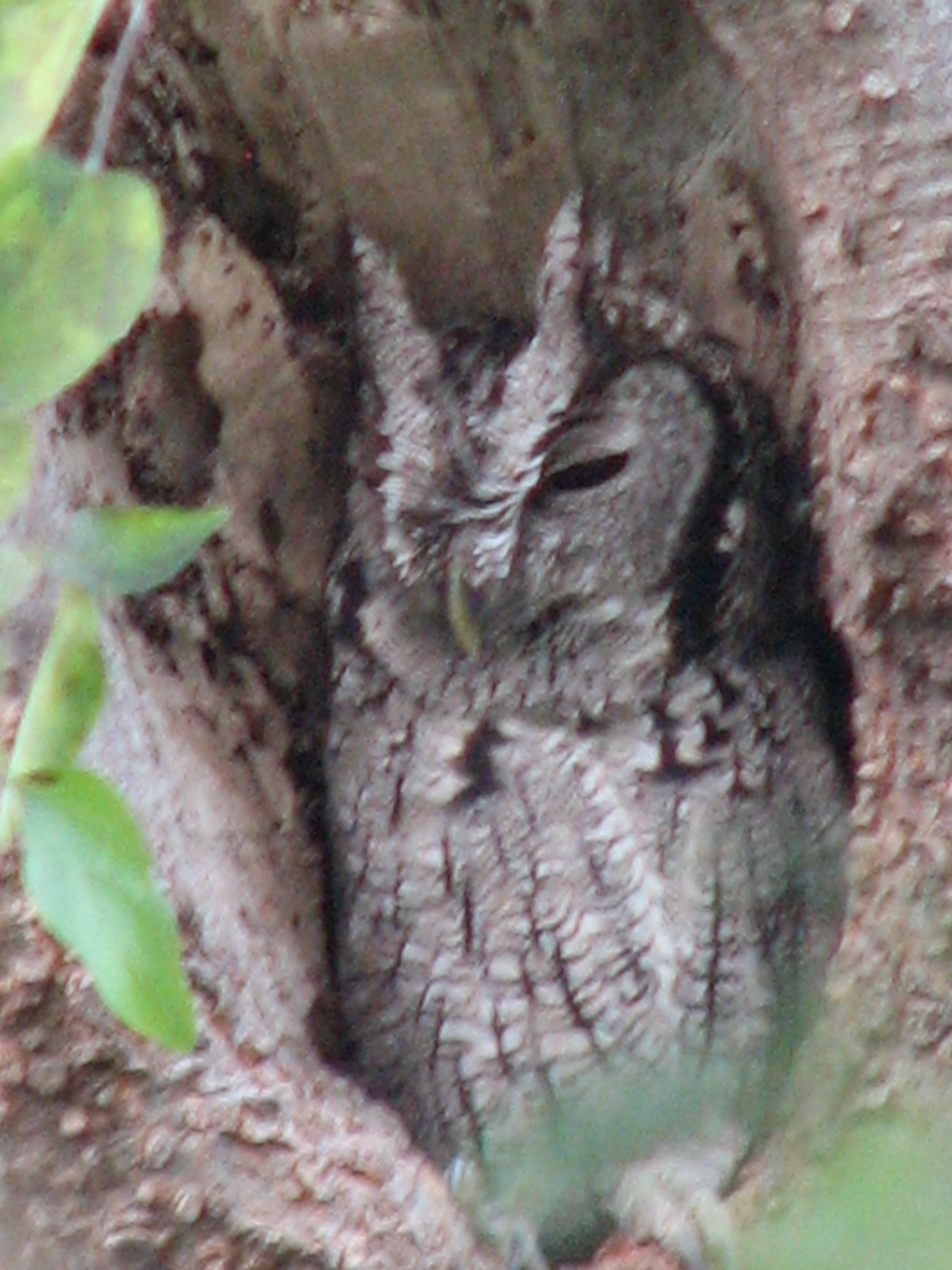
|
| is perfect for Eastern Screech-owl! |
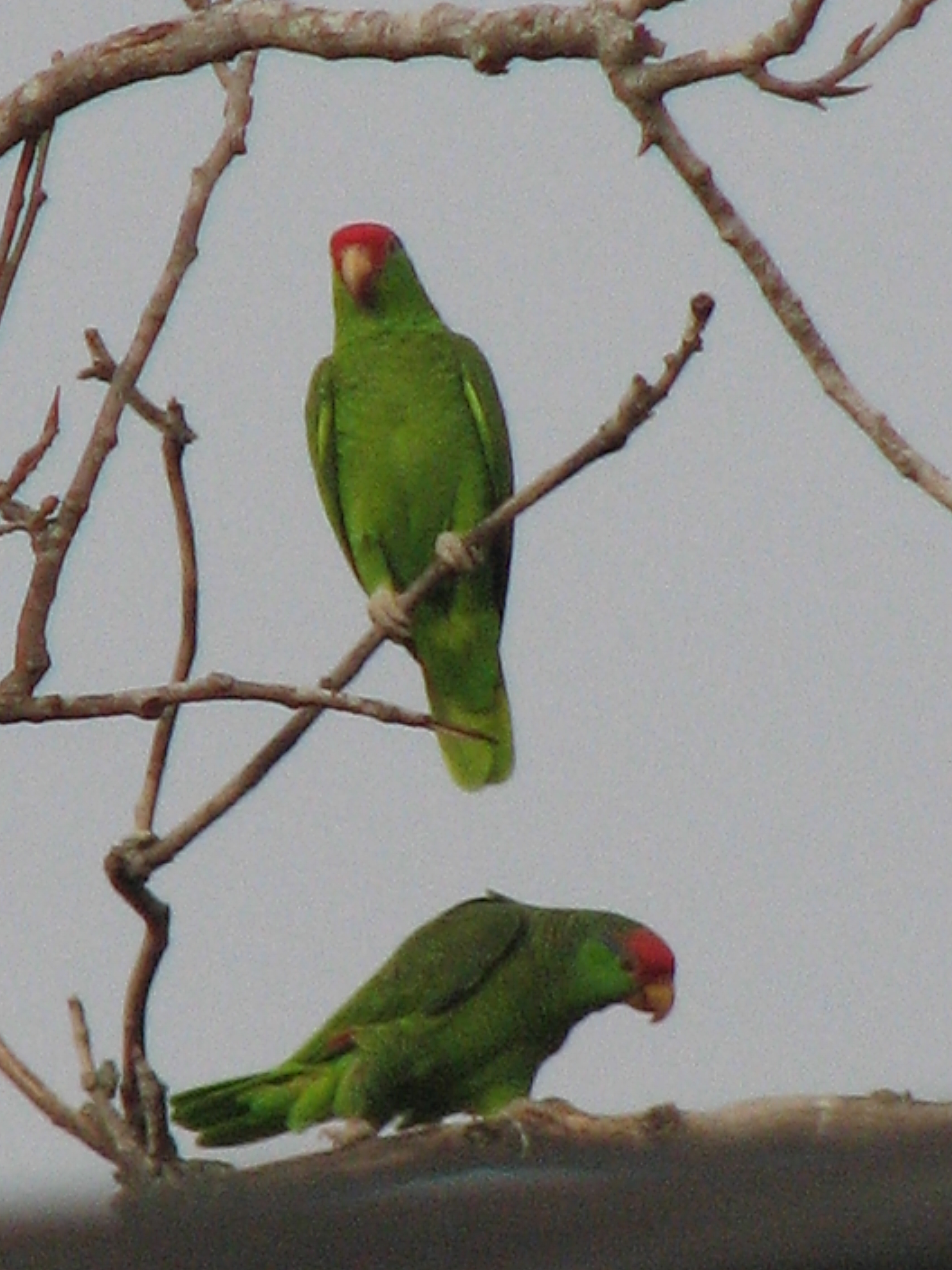
As you cross the small yellow bridge from the Parking Lot into the Park, be sure
to look over the sides into the irrigation ditch. Oftentimes on the east side, there sits a *Green
Kingfisher*!

Once on the brick entry sidewalk, don't let up your guard-- this is the very best
place to see lizards:
| Most common is the Texas Spotted Whiptail-- |

|
| spots between stripes, nothing on the tail. |
| Also common is the Rose-bellied Lizard-- |
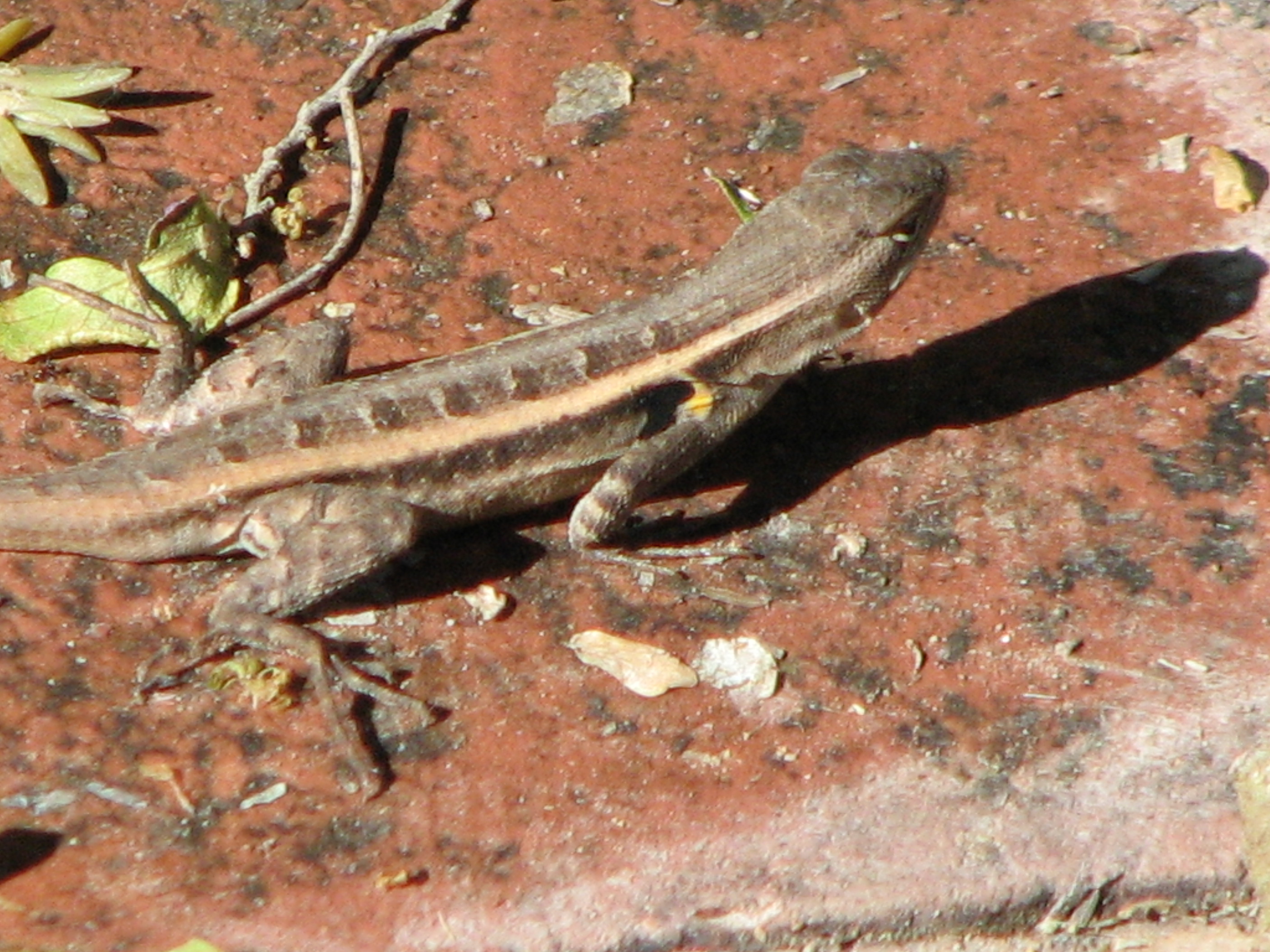
|
| note the yellow and the black shoulder spots. |
| Common in the trees (but sometimes on the bricks) |
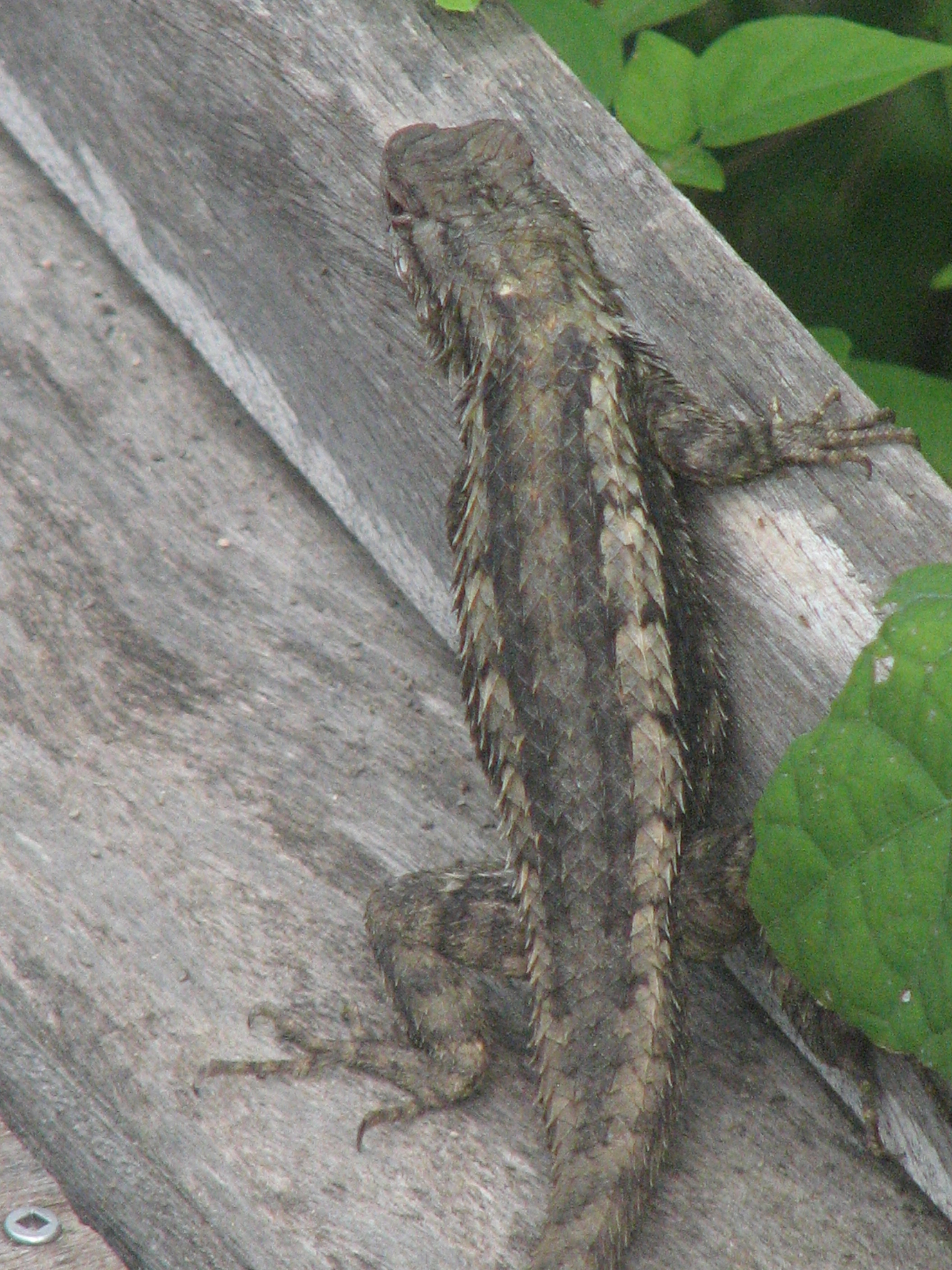
|
| are the Texas Spiny Lizards (see the spines?!). |
| Harder to see (because they blend in with leaves) |
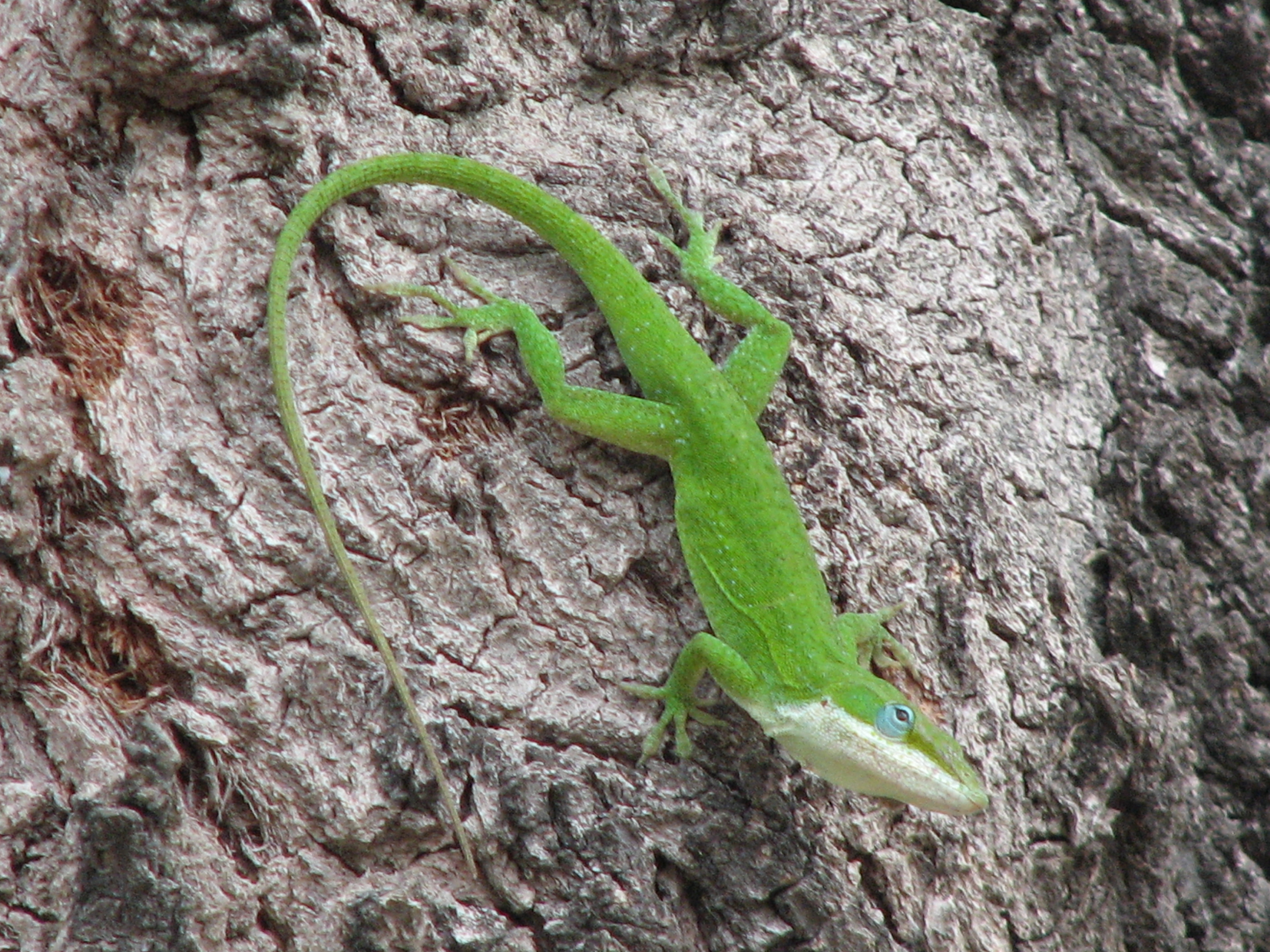
|
| are the native Green Anoles (sometimes brown). |
| If you see a Four-lined Skink |

|
| count yourself as lucky! They're fast! |
| Brown Anoles shouldn't be here but... |
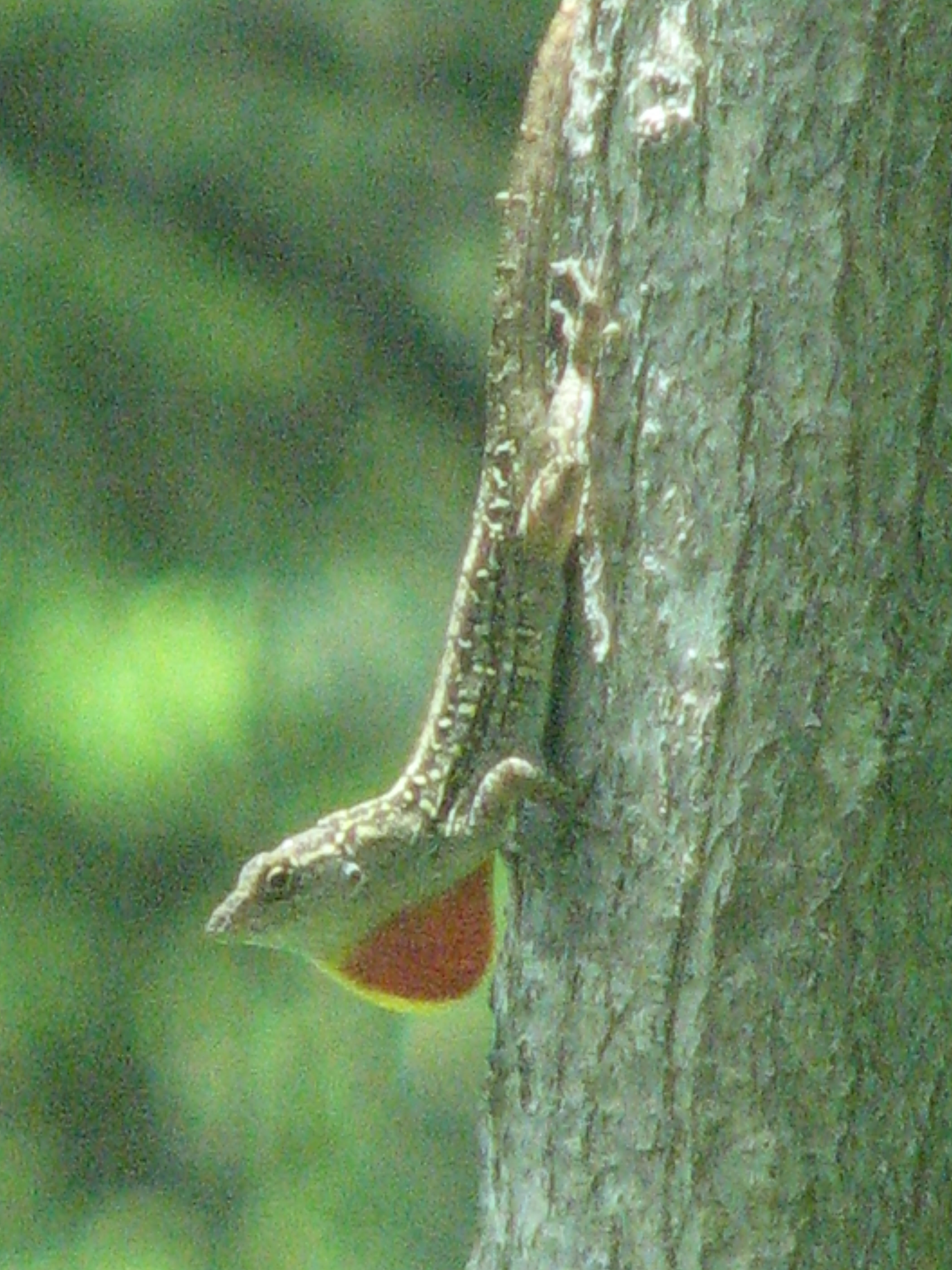
|
| there are plenty nonetheless (introduced). |
| Another introduced species (as the name implies) |
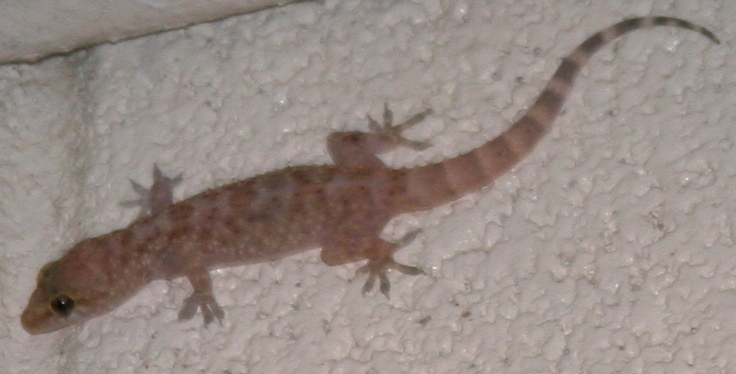
|
| are the Mediterranean Geckos. |
| On your right as you walk up the sidewalk |
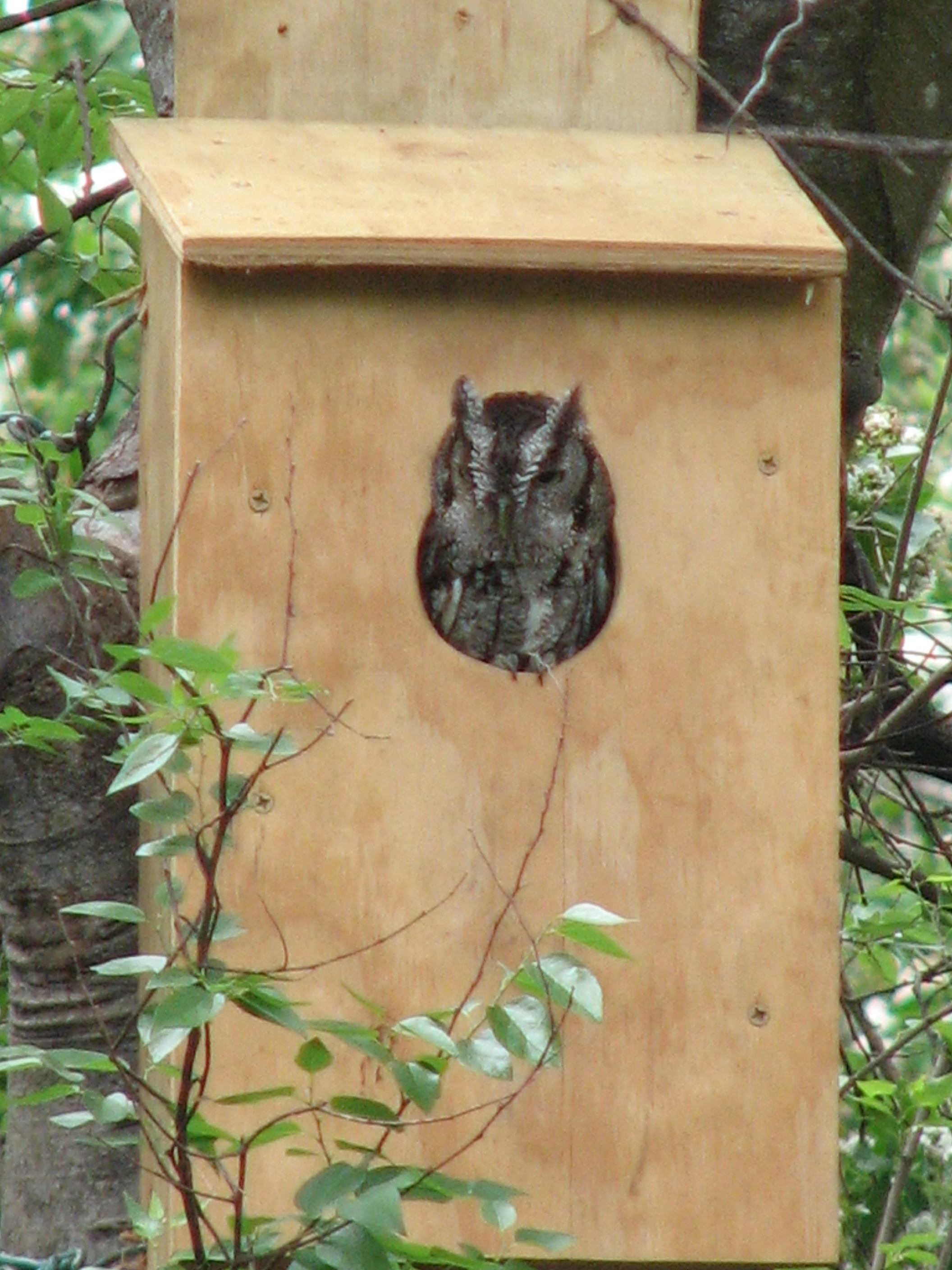
|
| will be an owl box-- often with the owl sleeping. |
As you approach the Headquarters building you will see many feeders, and many opportunities
to see wild native birds up close, as if they were domesticated and accustomed to humans being a few feet away! *Buff-Bellied Hummingbirds*, *Plain Chachalacas*, *Green Jays*, *White-tipped Doves*, *Groove-Billed
Anis* (common in summer, but hard-to-see in winter!) join the more common Inca and Mourning Doves, with
the inevitable House Sparrows and Red-Winged Blackbirds. Great-tailed Grackles (the schoolchildren tend to call them
"crows" although there are very rarely crows in South Texas) are everywhere, and under-appreciated in spite
of their fine glossy plumage, general hugeness, bright yellow eyes, and great long tails. Especially look for them at
Walmarts and HEBs at dusk.
| Anywhere there's FOOD look for |
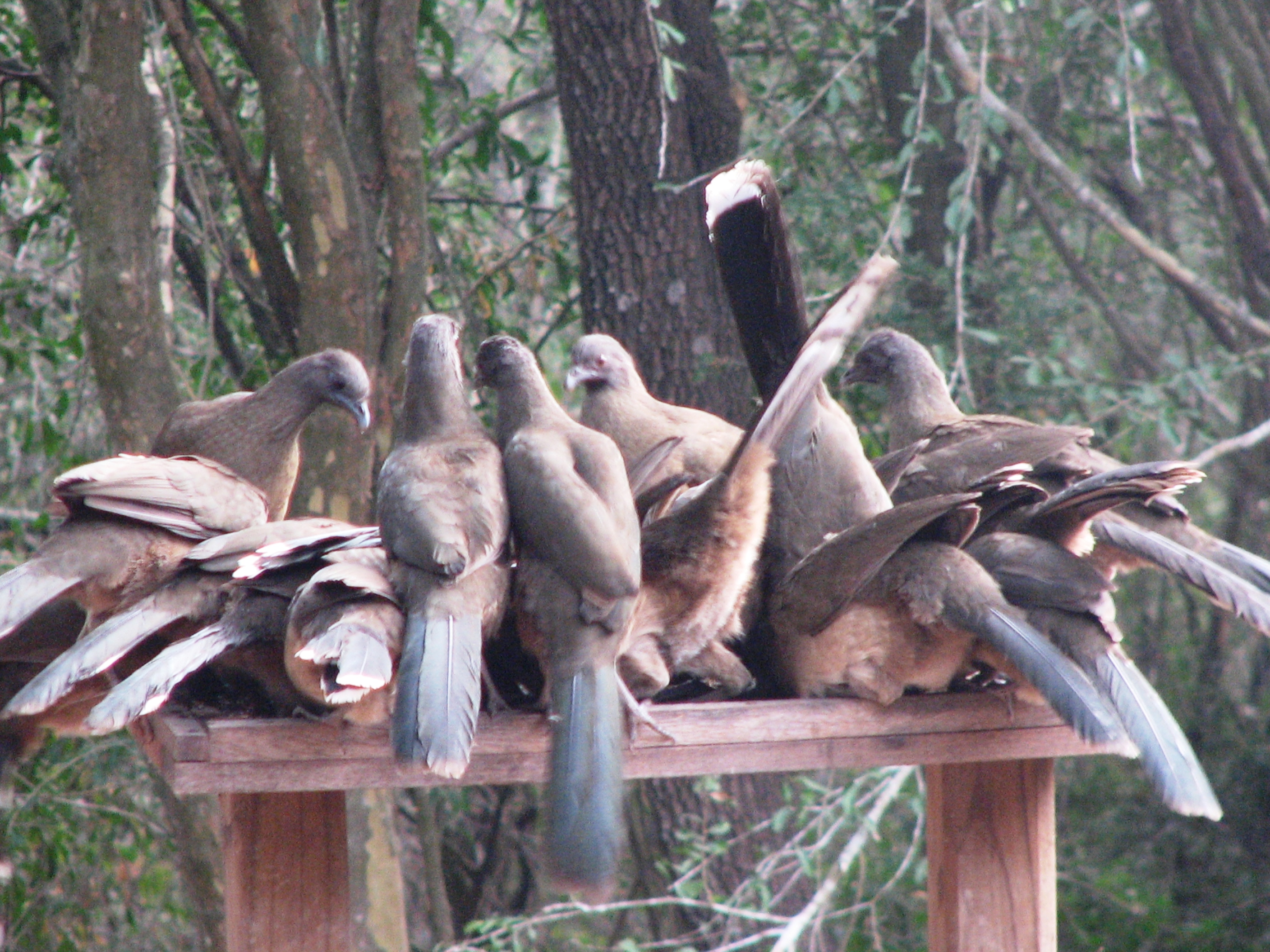
|
| Plain Chachalacas (only found in 4 SoTX counties). |
| This Groove-billed Ani was caught peeping into the |
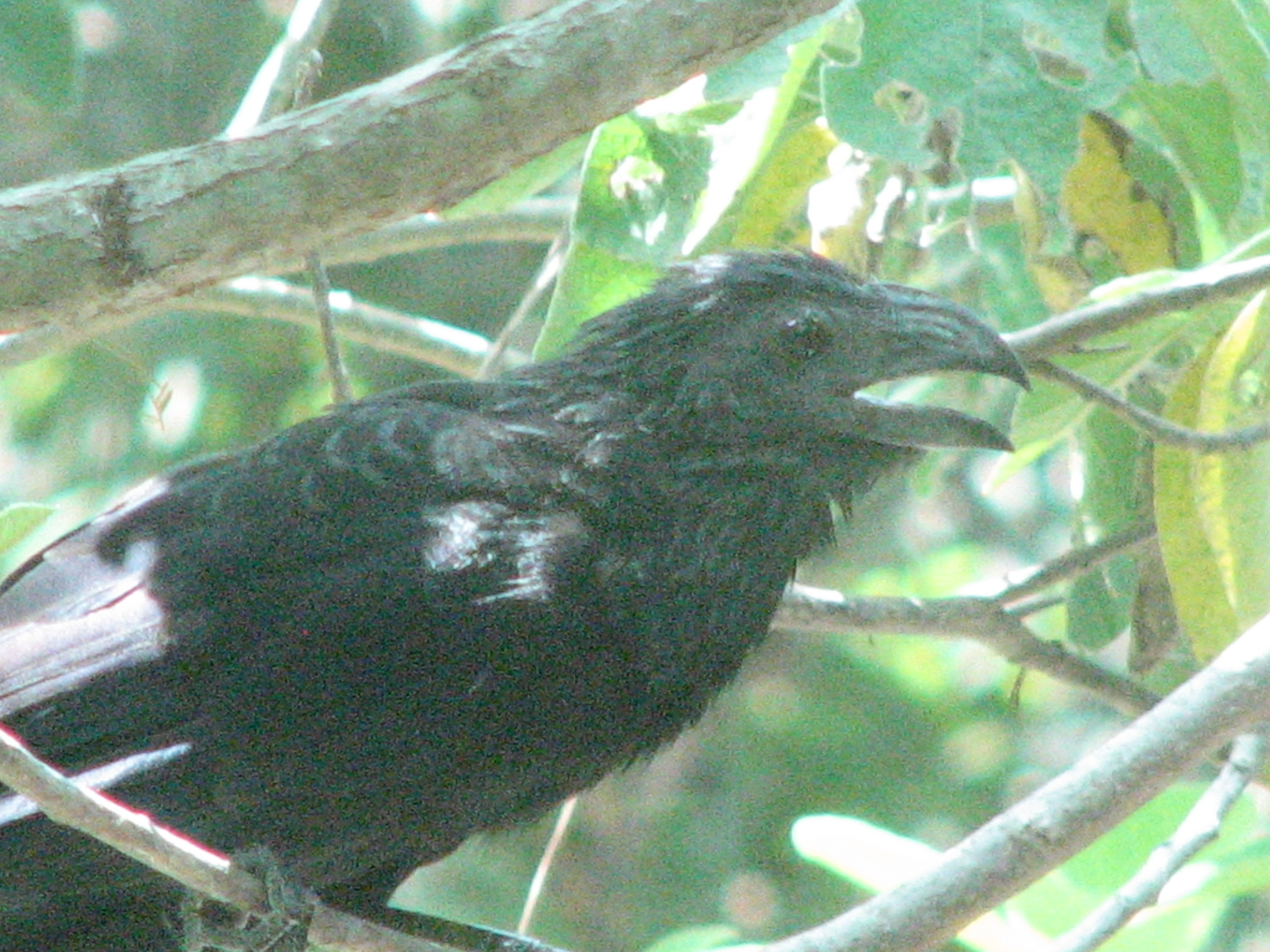
|
| Headquarters building windows. |
| From inside the Headquarters building again, |
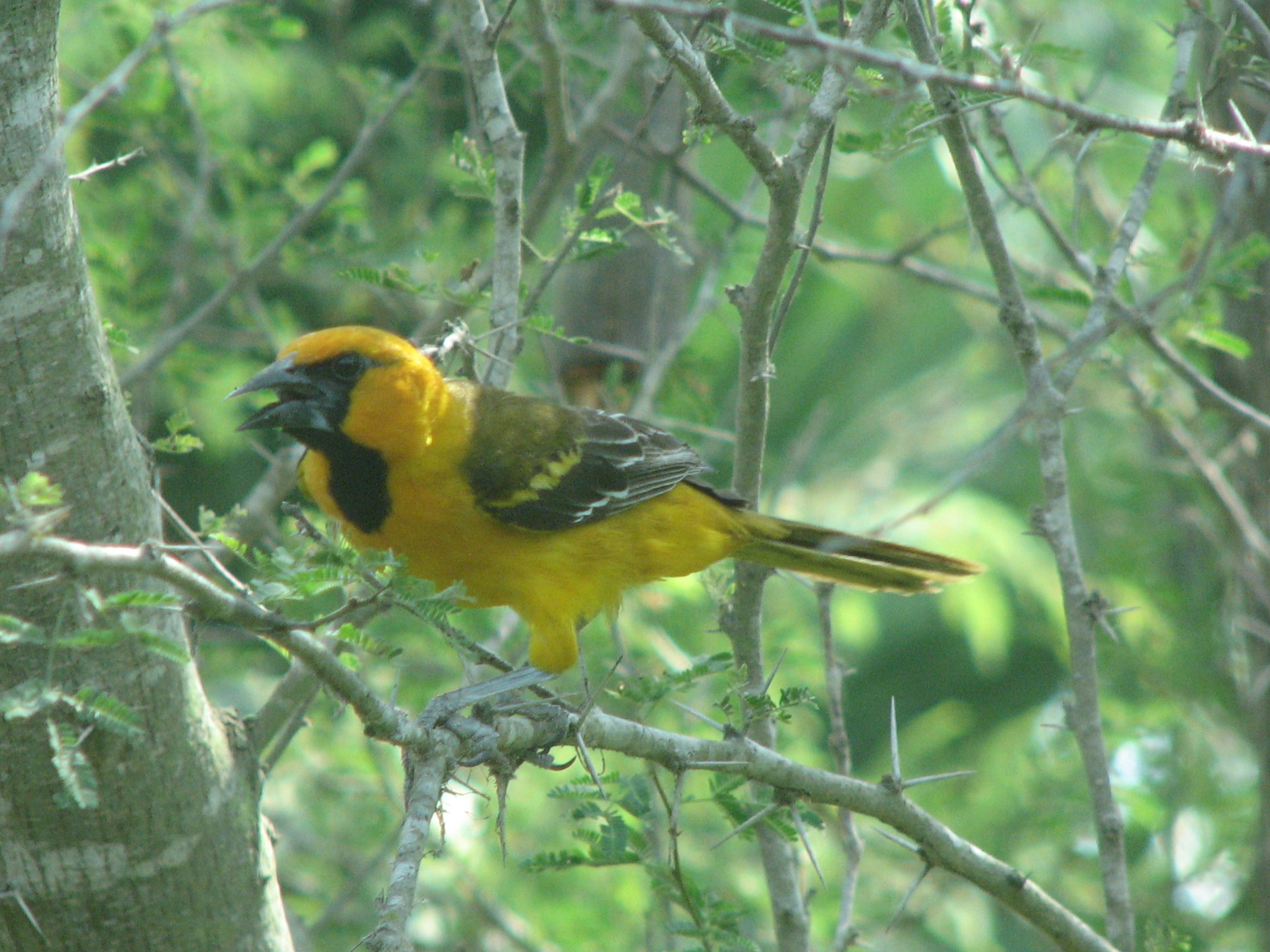
|
| the Altamira Oriole, found only in SoTX in the US. |
| Our most common hummingbird, the Buff-bellied, is |
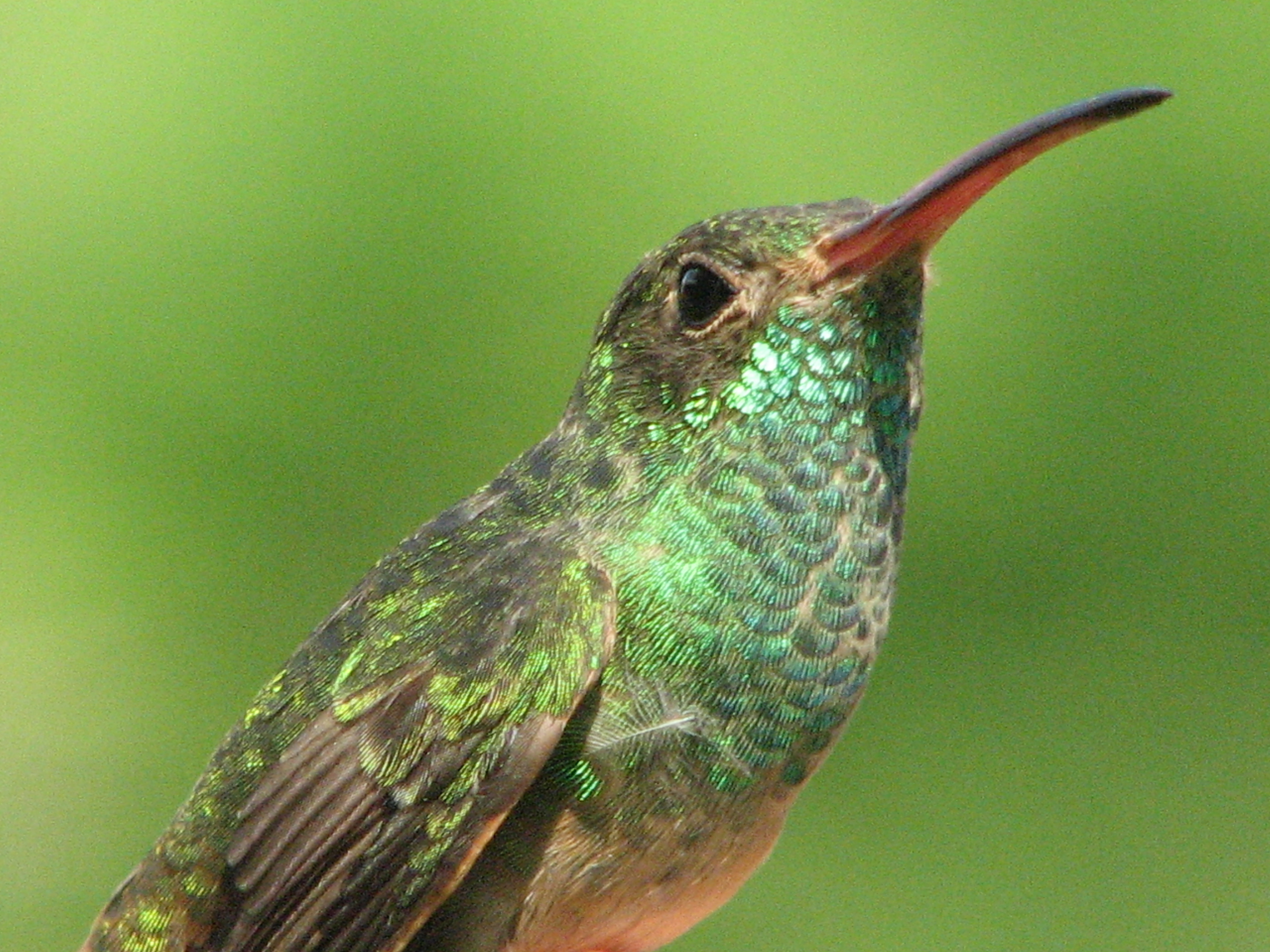
|
| found nowhere else in the United States. |
| The favorite bird of most Park visitors: Green Jay |
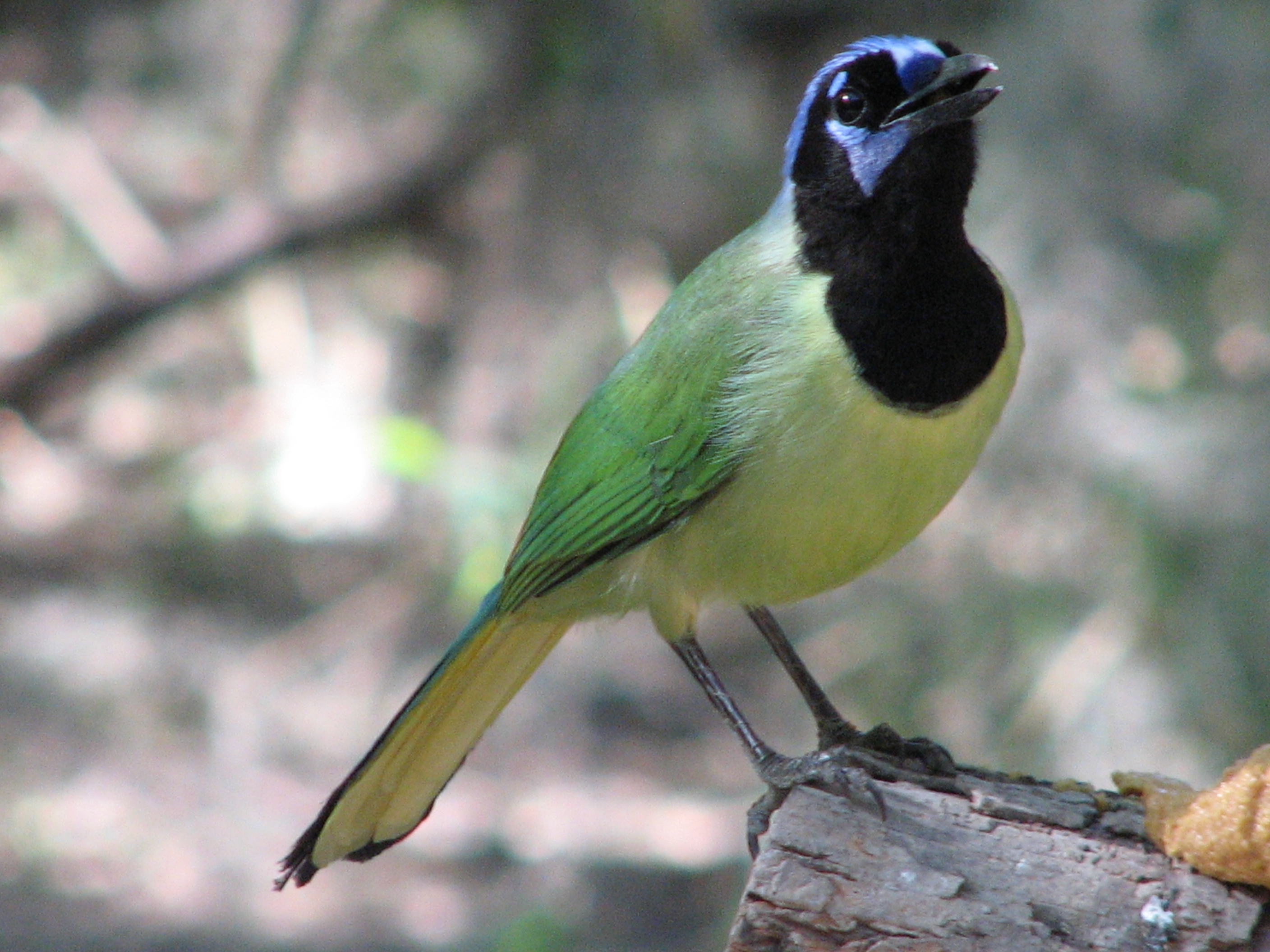
|
| Usually on the ground and seldom flying |
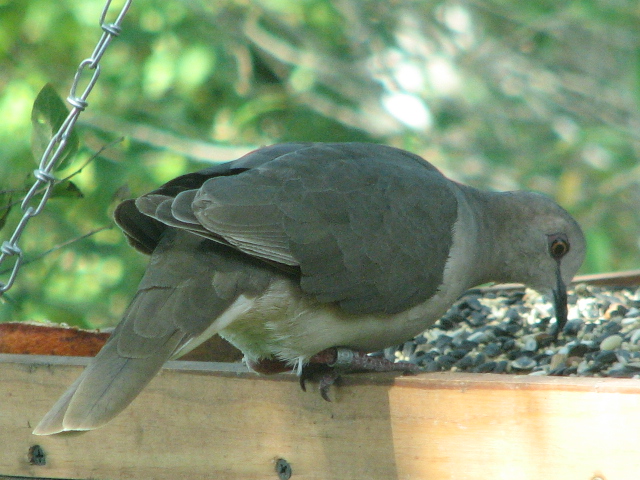
|
| the White-tipped Dove |
The record number of species seen off the Headquarters Deck, by our Park Store?
113! It's a good place to get pictures, too, as the birds become accustomed to all the deck activity. You
here overlook Ibis Pond and in the back Avocet Pond.

| Roseate Spoonbills |
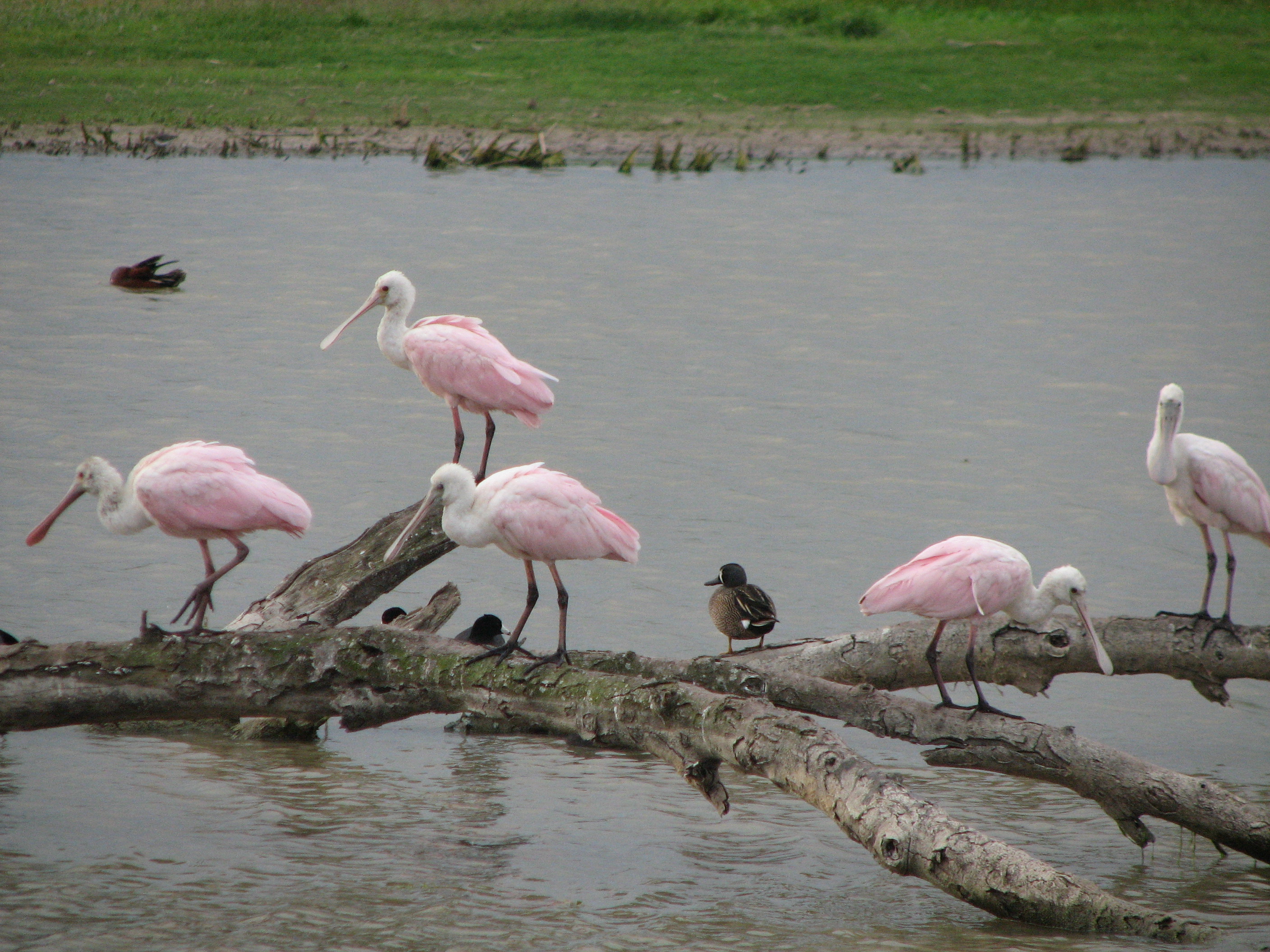
|
| Another favorite! |

| Wood Storks are great at any distance, even |

|
| overhead, but off the Deck?! |
| Many duck species winter here (perhaps 25?) but |
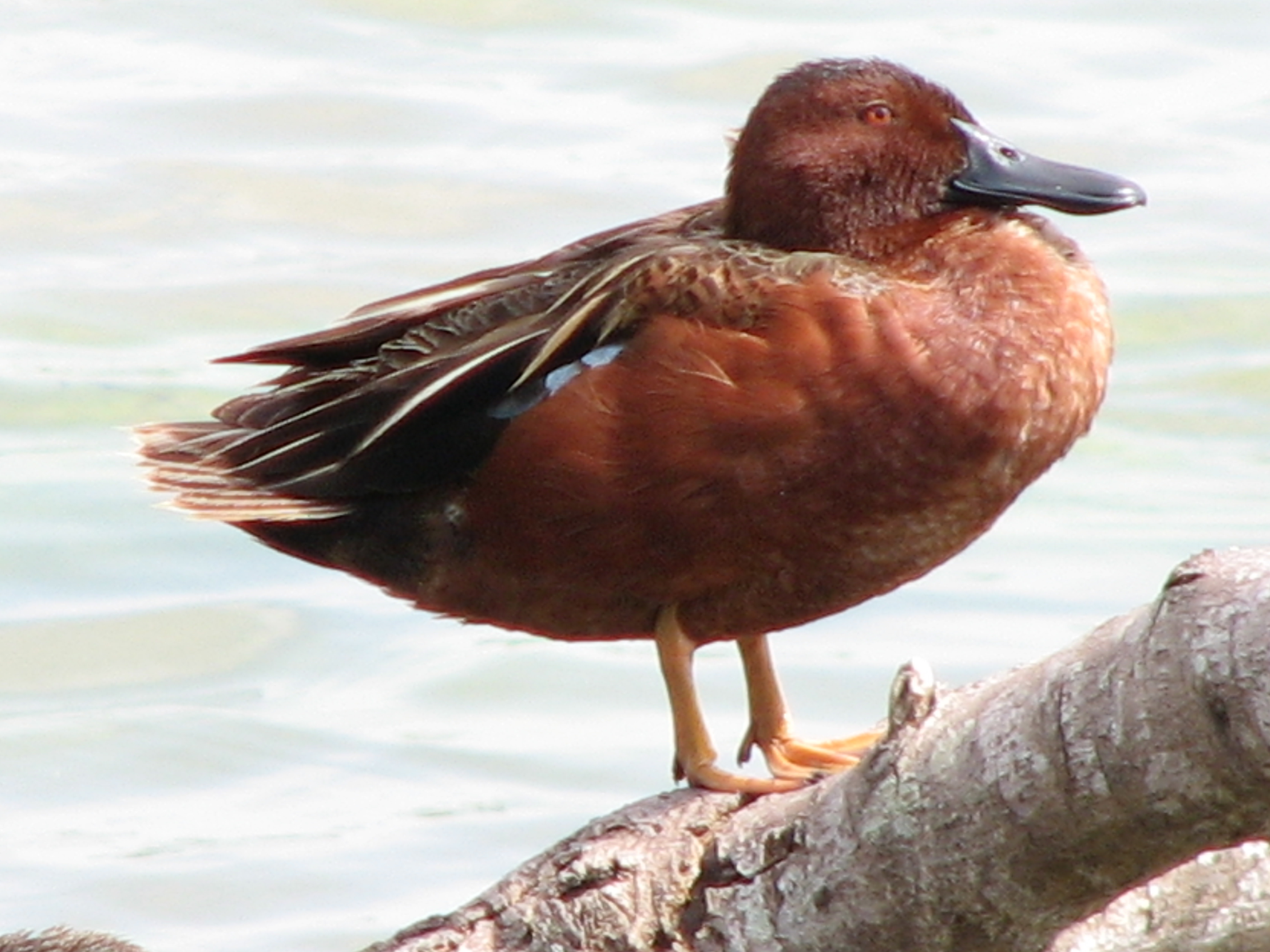
|
| Cinnamon Teal are a favorite! |
| Both White and White-faced Ibis are expected but |
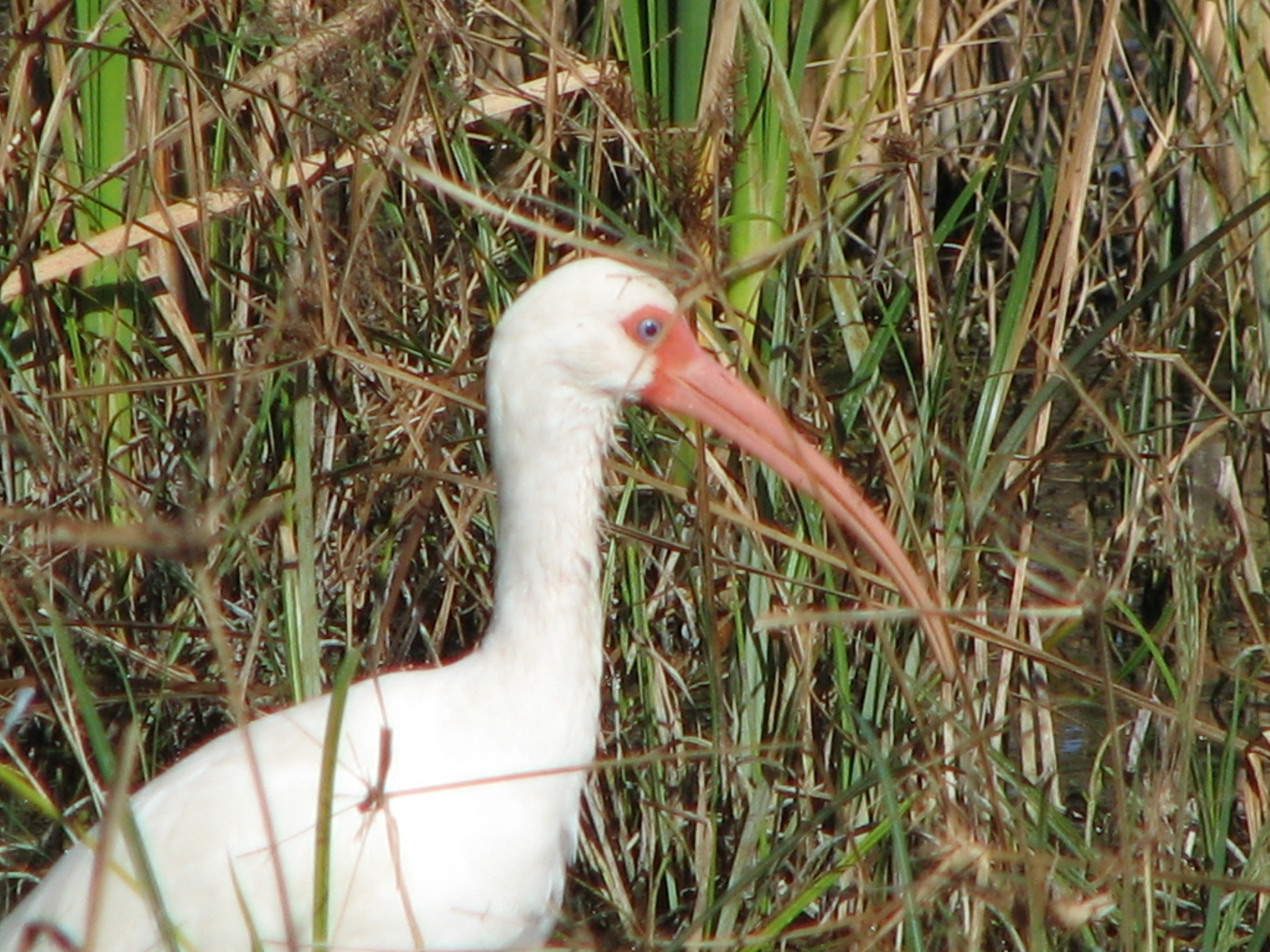
|
| we always watch for the unexpected Glossy. |
| Sora are common in the Park in winter, this one |
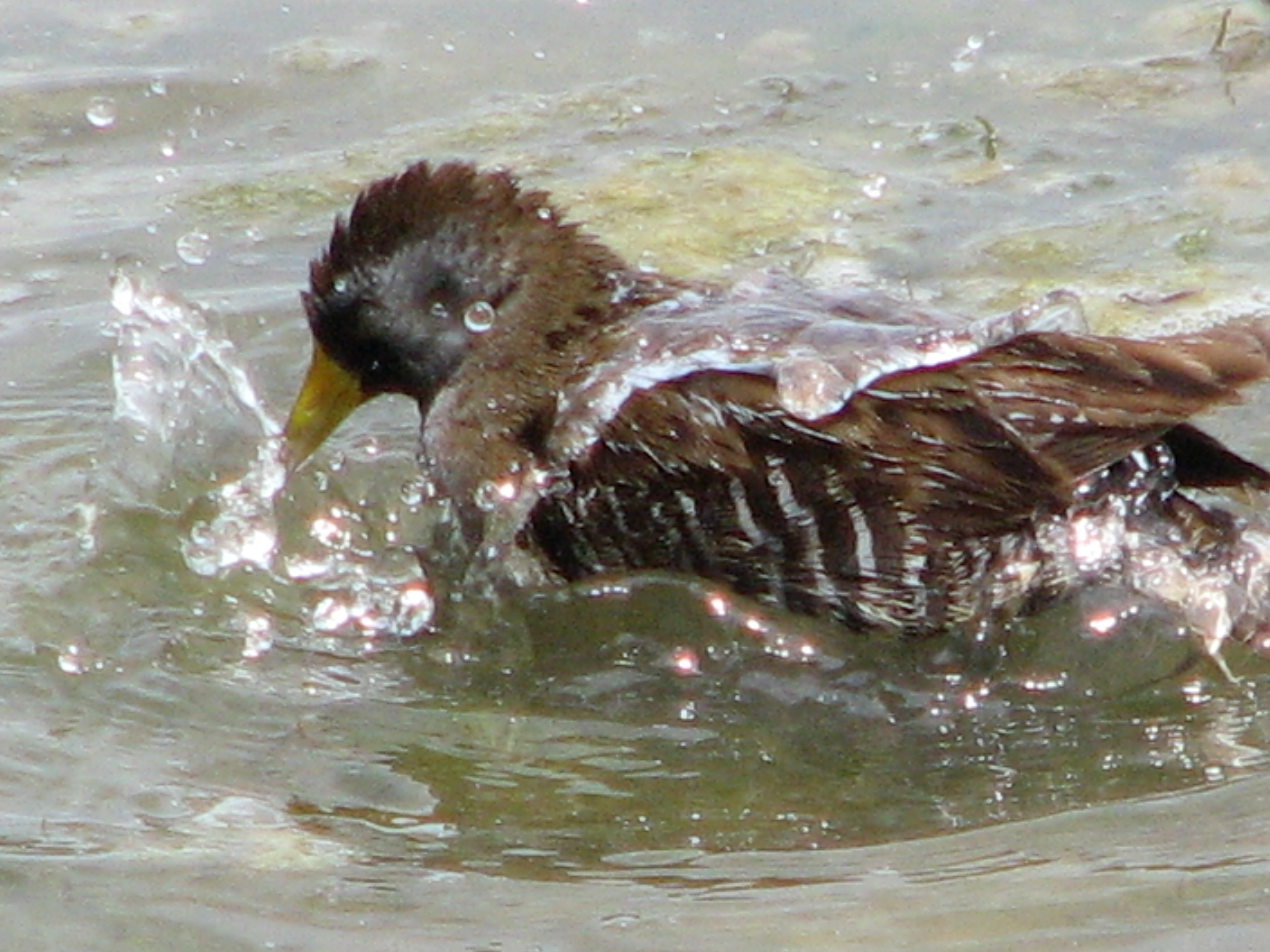
|
| bathing off the Deck in front of God and everyone! |
| There are ALWAYS Black-bellied Whistling-Ducks |
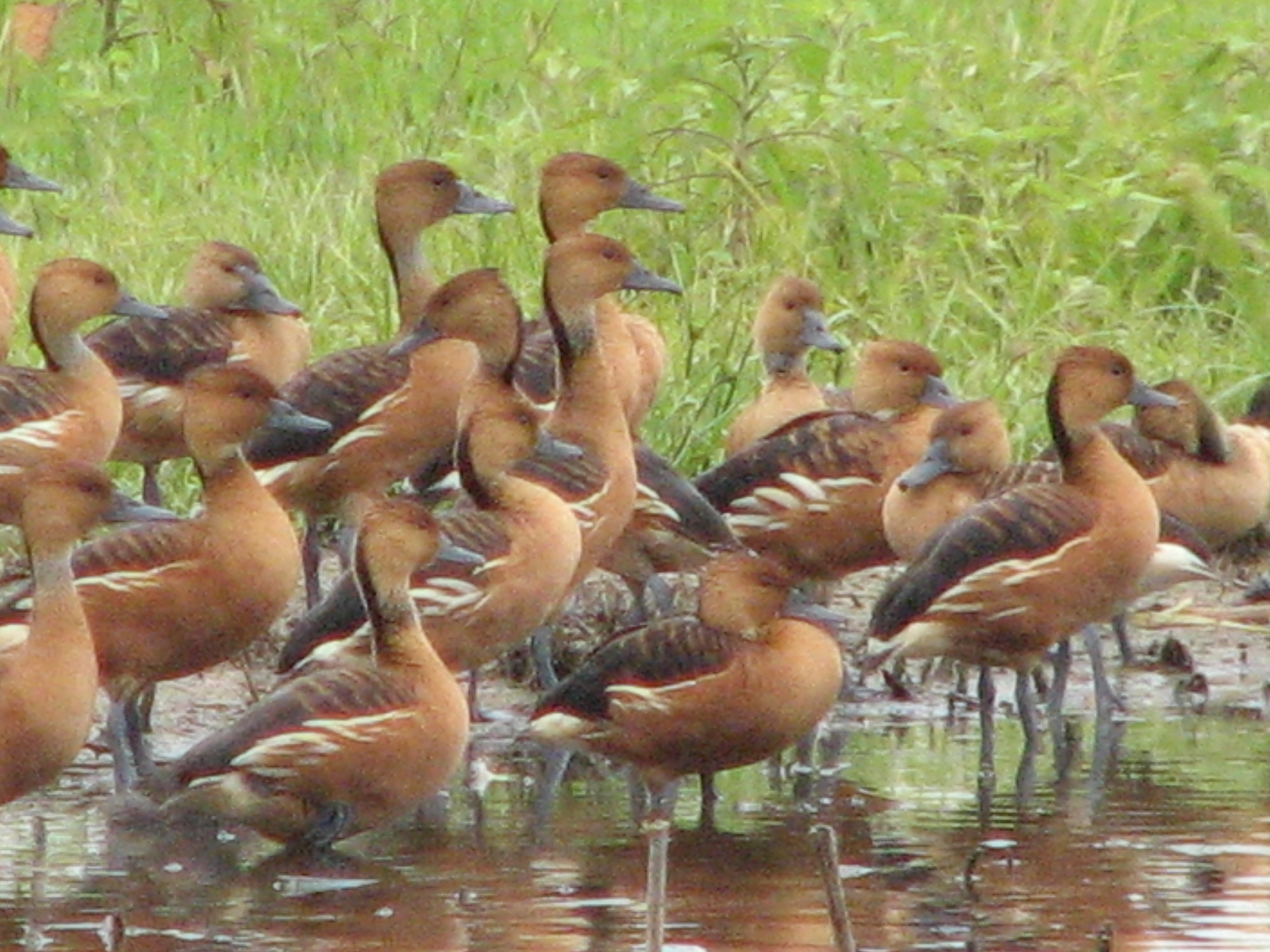
|
| all over South Texas, but Fulvous are VERY special |
Edging down the path toward Alligator Lake one will come to Dowitcher Pond first.
As the name implies, many Long-Billed Dowitchers, and Stilt Sandpipers (some 20 shorebird species) visit here.
Only three kinds of turtles make their home here (Red-Eared Sliders, Texas Spiny Softshells, Yellow Mud Turtles), but watch
for our cherished snakes, all harmless except for the Coral Snake-- count yourself as extremely lucky to see this red-black-yellow
venomous friend. No Rattlesnake has been seen in the Park, probably because we have plenty of the snake-eating threatened-specie
Texas Indigo Snakes.
| The Great Kiskadee appears everywhere in the Park |
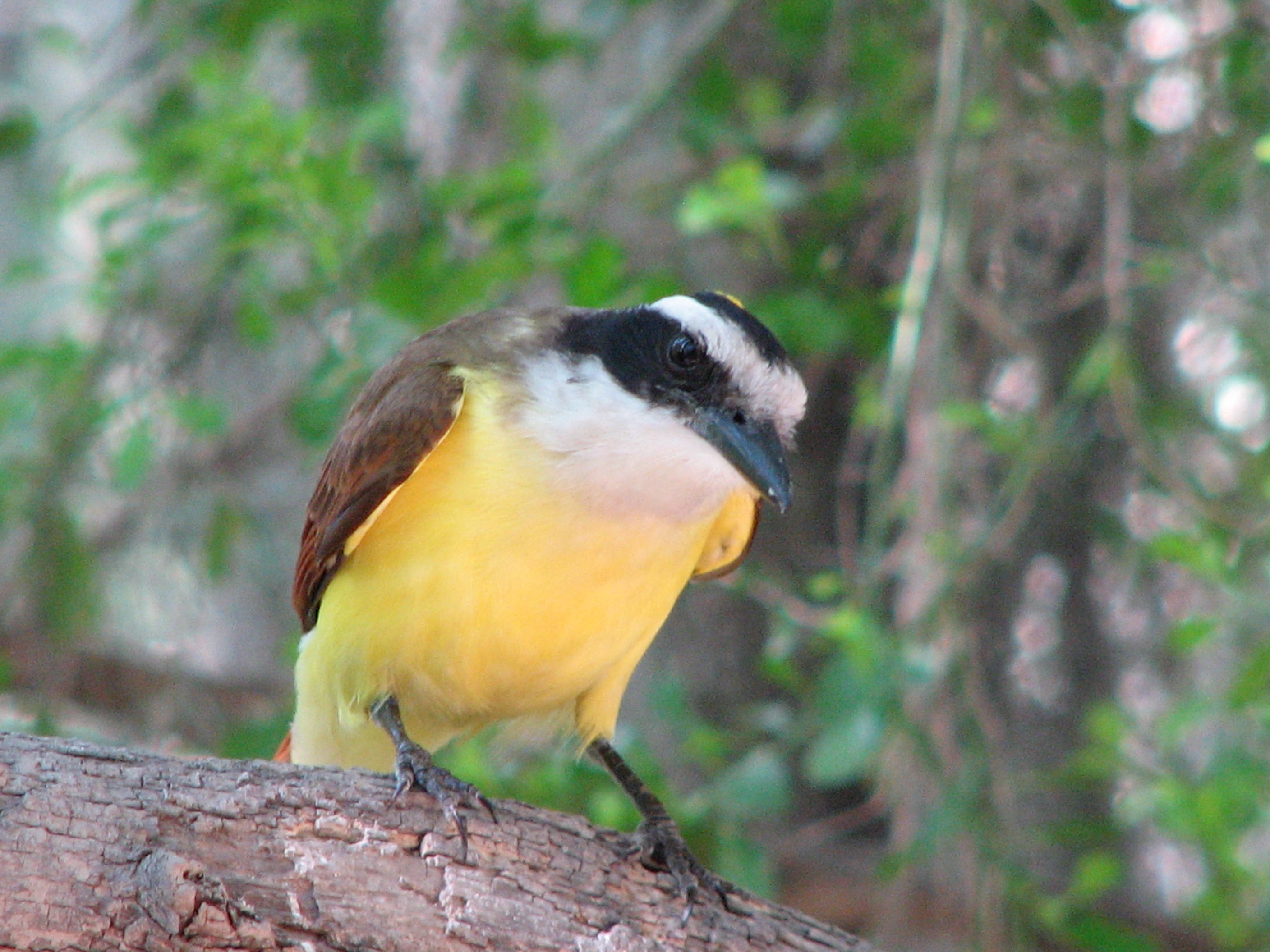
|
| but especially near water. |
As one crosses the iron bridge, one could turn into our cactus area, the Camino de
Aves ,(especially for Bewick's Wrens, Common Ground-Doves, Harris's Hawks, Texas Tortoises and Pack Rats)
or come upon tiny Grebe Marsh. As the name implies, this is a great place to find
both the very common Pied-Billed Grebe as well as the found-only-in-South-Texas *Least Grebe*.
Differentiate the Least from the Pied-billed Grebe by its tiny size, its bright yellow eye, and its sharp pointed bill.
Enroute to and around Alligator Lake watch for *Long-Billed Thrashers* and
*Olive Sparrows*.
| Least Grebe |
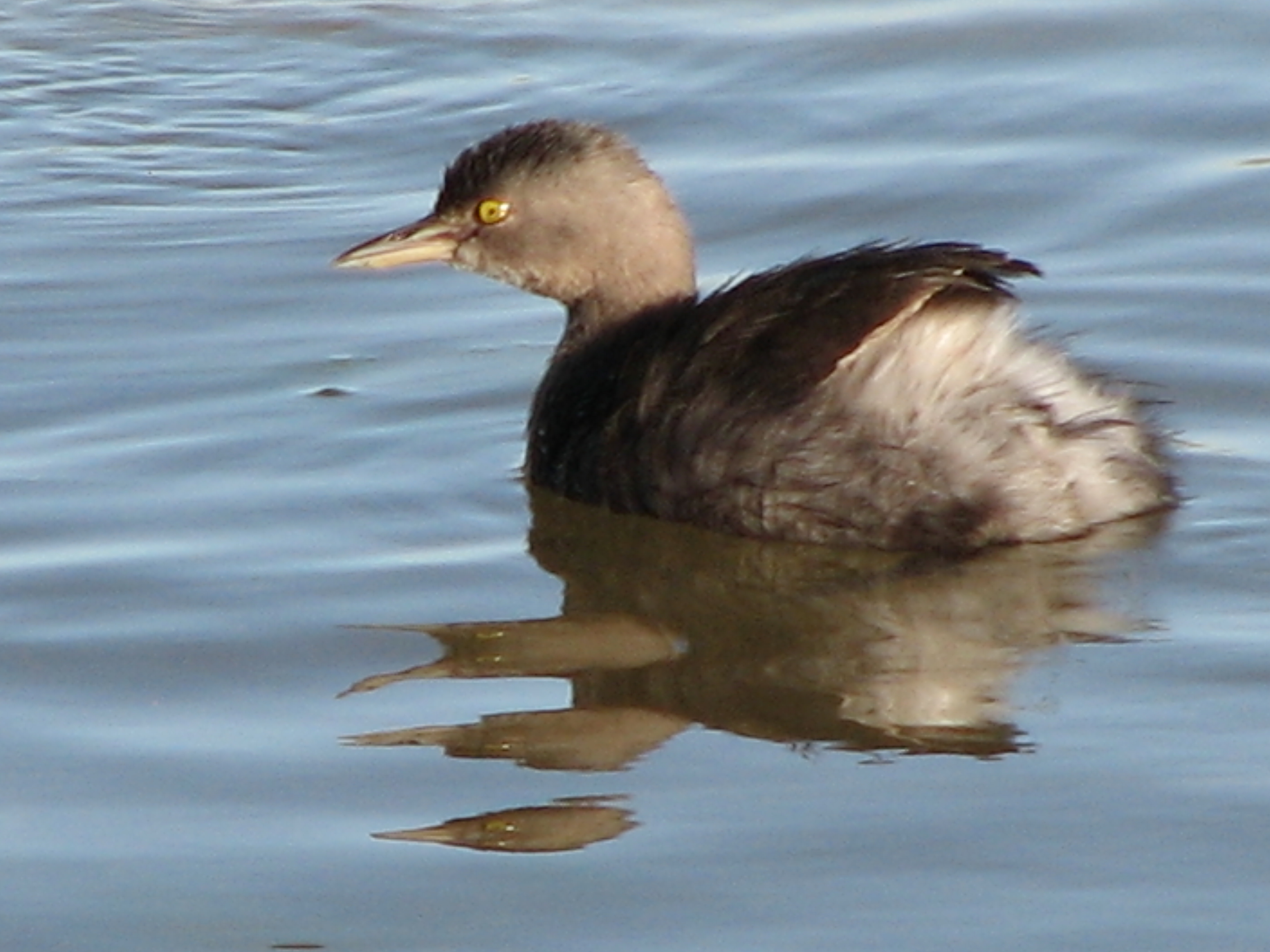
|
| Note the yellow eye and sharp bill |
| Looking for all the world like a Brown Thrasher, |
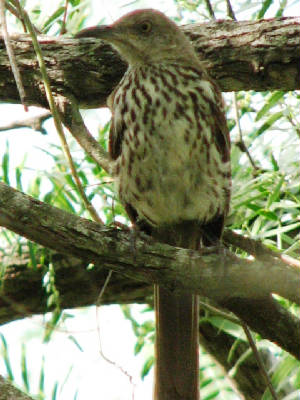
|
| the Long-BIlled Thrasher is found only in SoTX |
| No Alligator has ever caused a problem |
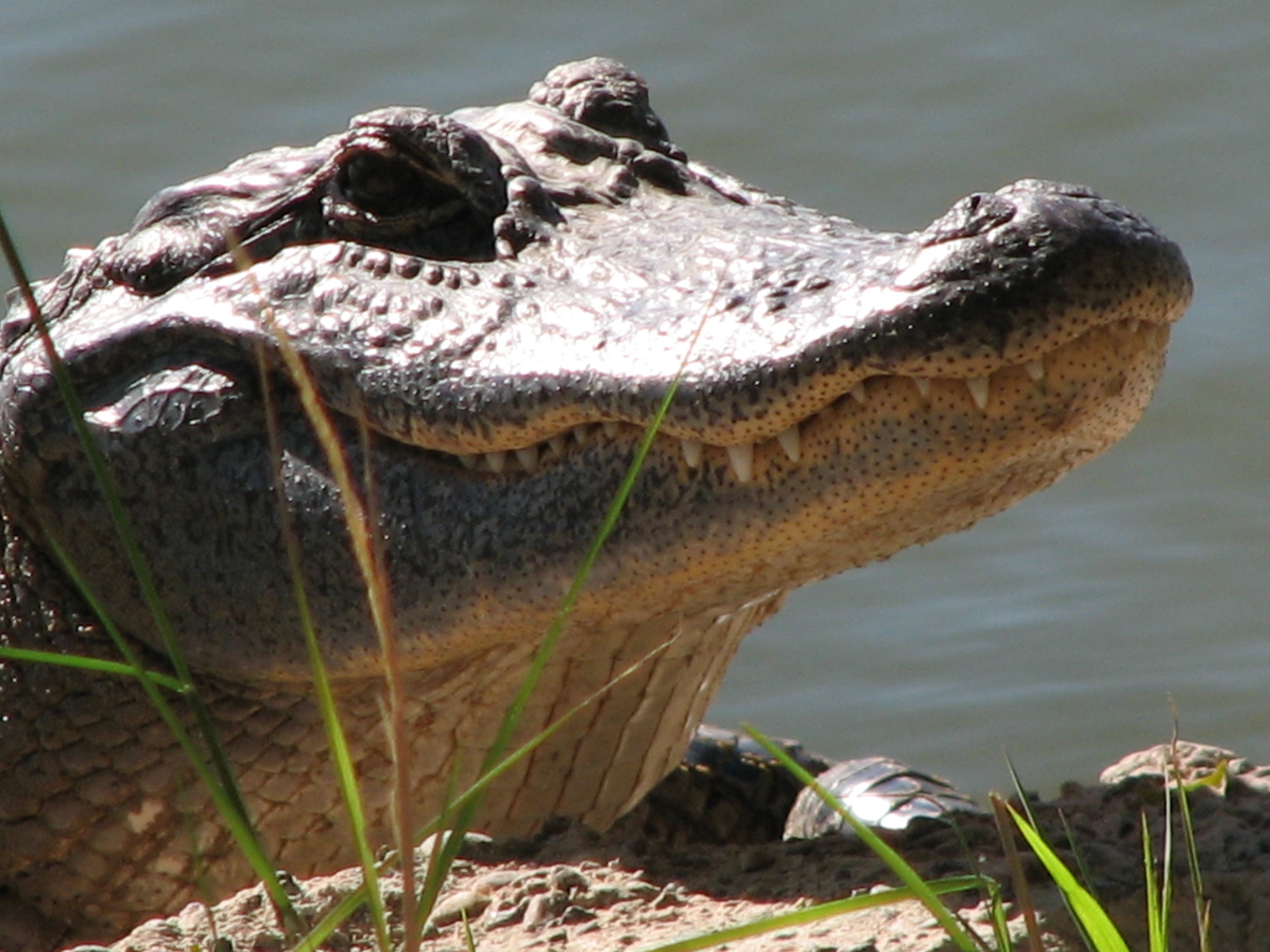
|
| so don't worry, but do treat them with respect. |
Alligator Lake is named for its Alligator shape, but it does indeed contain Alligators,
along with great birds like *Ringed and Green Kingfishers*, Anhingas, Neotropic
Cormorants, and Least Bitterns.
| Anhinga |
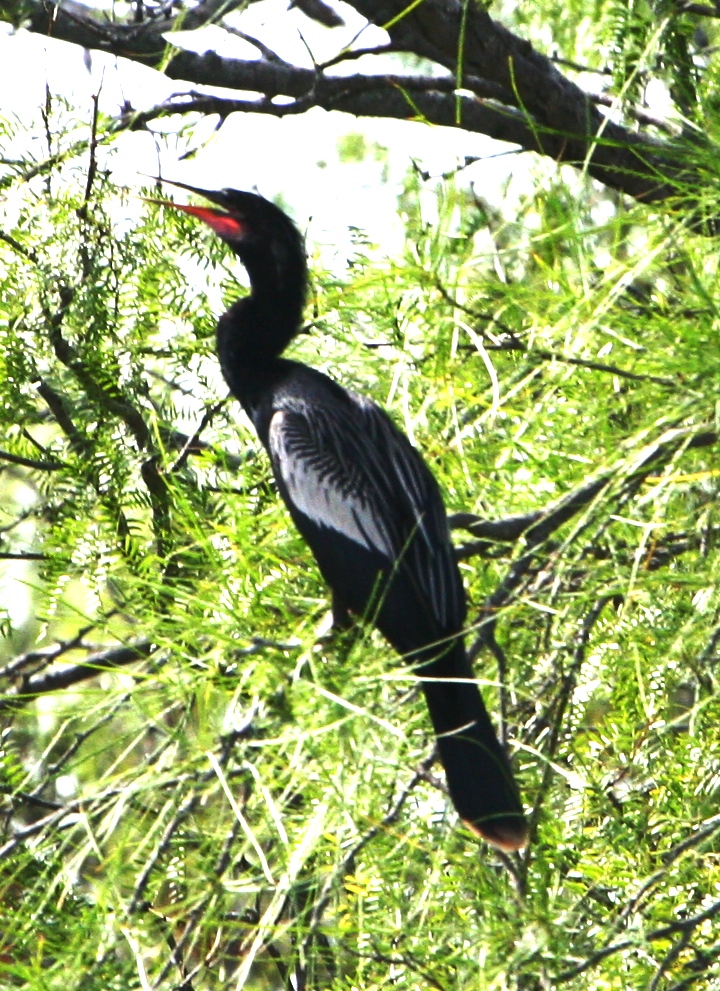
|
| whose scientific name is Anhinga anhinga |
| All over the Park there are many Common Pauraques |
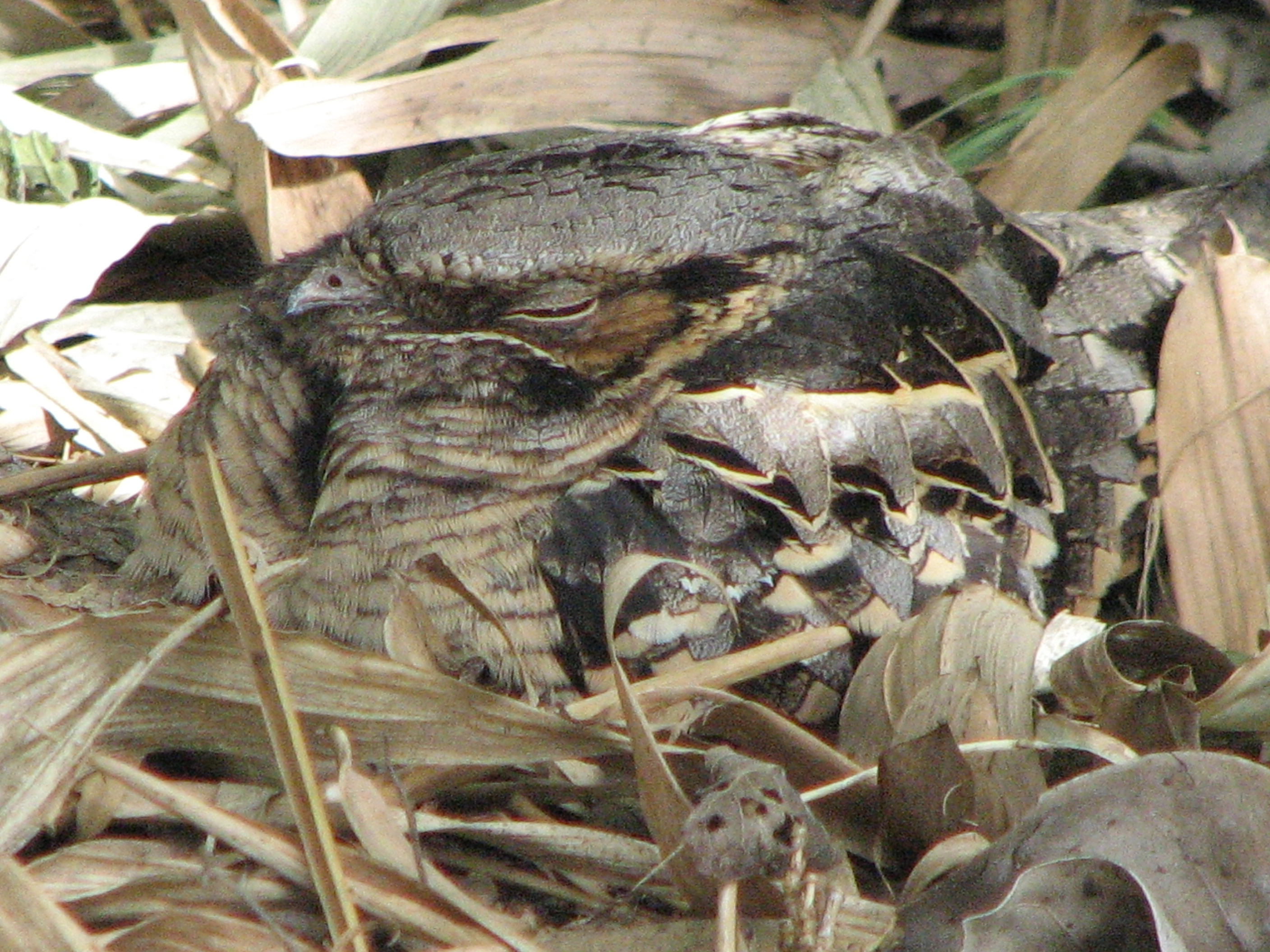
|
| but this one has to be the world's most photographed. |
| Neotropic Cormorant: separate from DoubleCrested |

|
| by white at bill base, and no orange over the eye. |
Leaving Alligator Lake, one could go up on the levee to see herons, egrets, ducks,
sandpipers, avocets, shorebirds and (in winter) American White Pelicans by the hundreds! Almost never does a Brown Pelican
show up in the Park. Sprague's Pipit is possible here, in its season.

The grasslands by the Levee and behind Dowitcher and Ibis Ponds are full of sparrows
in winter, especially Savannah and Lincoln's, but also Grasshopper, sometimes Vesper, Clay-colored, Lark, and a real prize
would be LeConte's! If you're so inclined, Tarantulas and Scorpions can be found here with a search. It's also
great for that splash of color in a brown background, the winter-only Vermilion Flycatcher.
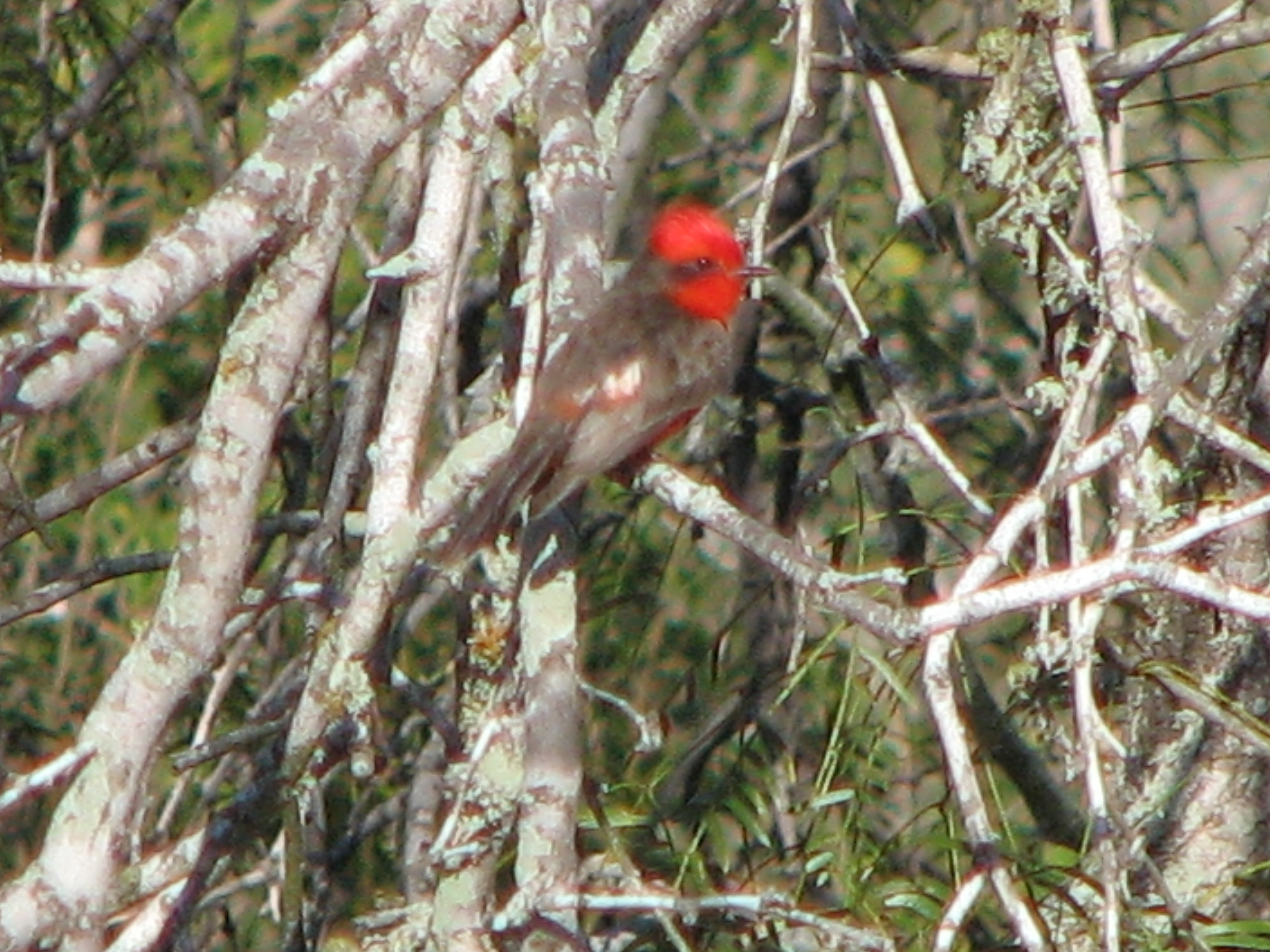
| Armadillos come out at night when days are hot, |
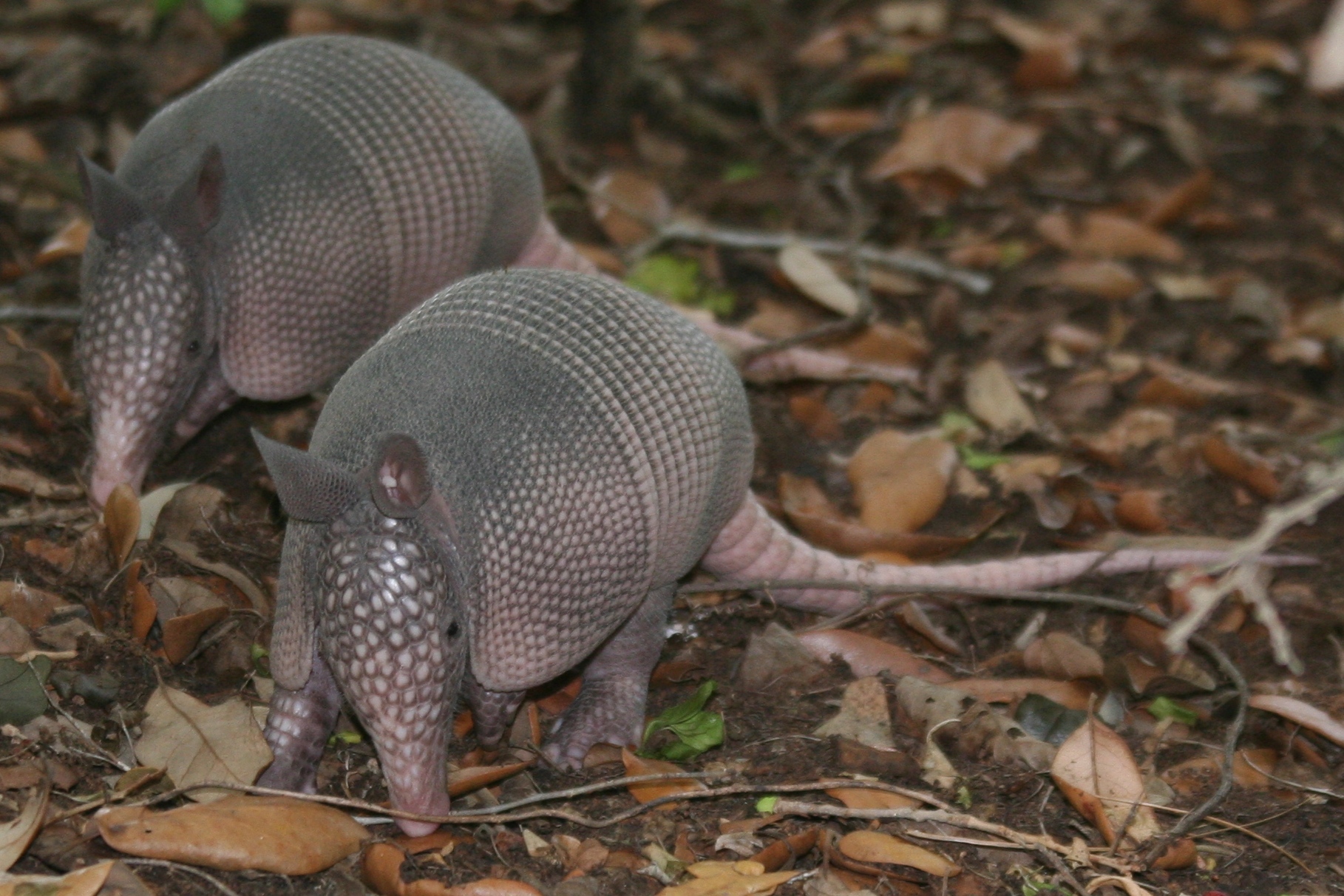
|
| and in the daytime when nights are cold |
In the Tropical Zone, also known as Lakeview, expect to see Inca Doves and Mockingbirds,
Curve-billed Thrashers and Mexican Ground Squirrels, Bobcats and wintering Warblers, *Couch's
Kingbird*, Ladderbacked and Golden-Fronted Woodpeckers. It is also in this special area that rarities
like the Tropical Parula, Blue Bunting, the White-throated Thrush, and the Rose-throated Becard. In Green
Jay Trail, at the north end of Lakeview, is an old Taumalipan Thorn Scrub woods, with *Clay-colored
Robins*, *White-tipped Doves*, *Plain Chachalacas*, *Green Jays*, as well as the beautiful *Mexican
Bluewing* butterfly.
| The Barn Owl, uncommon in some states, is |
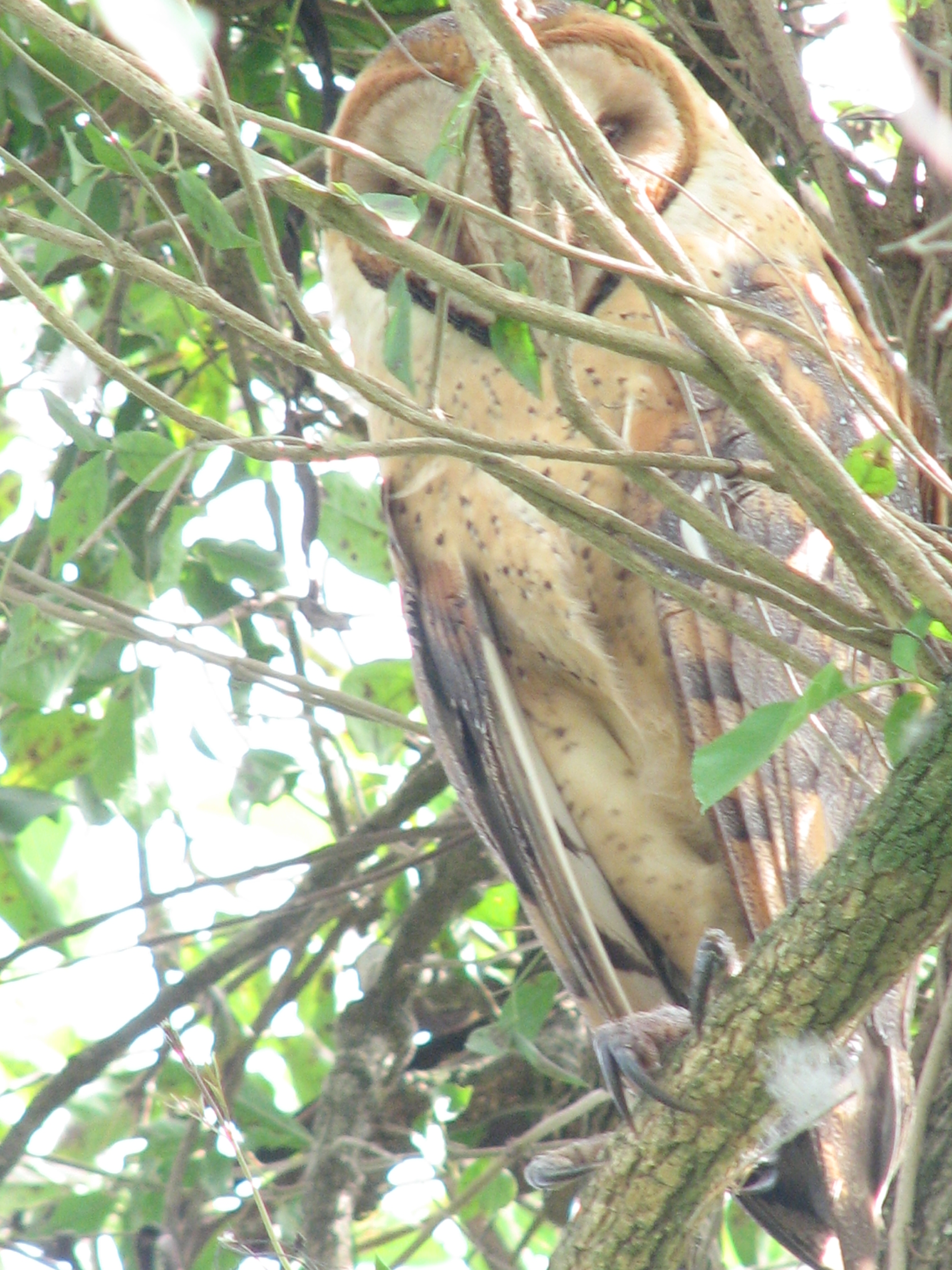
|
| common in Texas, many times seen hit on the road. |
| Curve-Billed Thrasher |

|


| Black-throated Magpie-Jay |
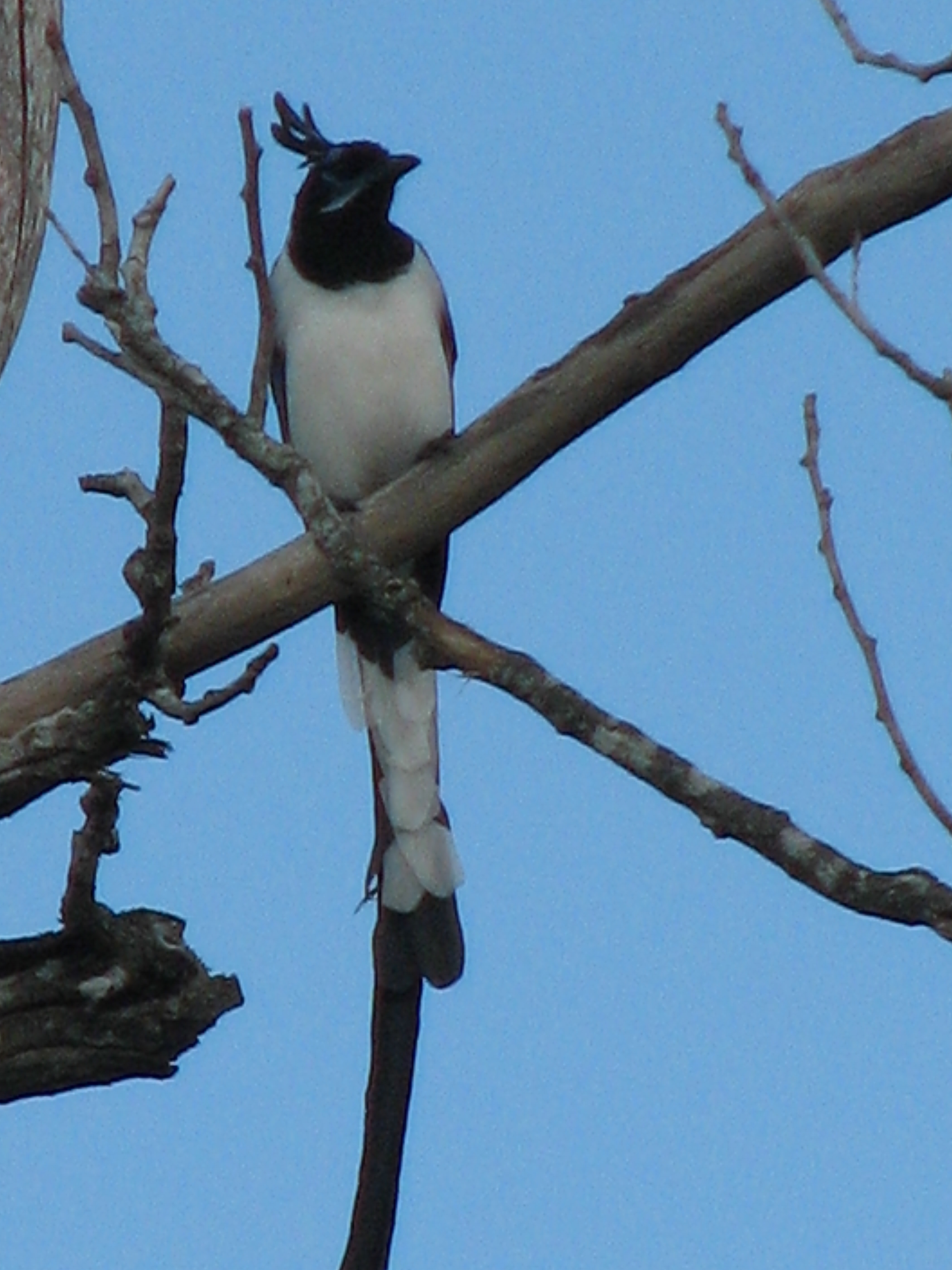
|
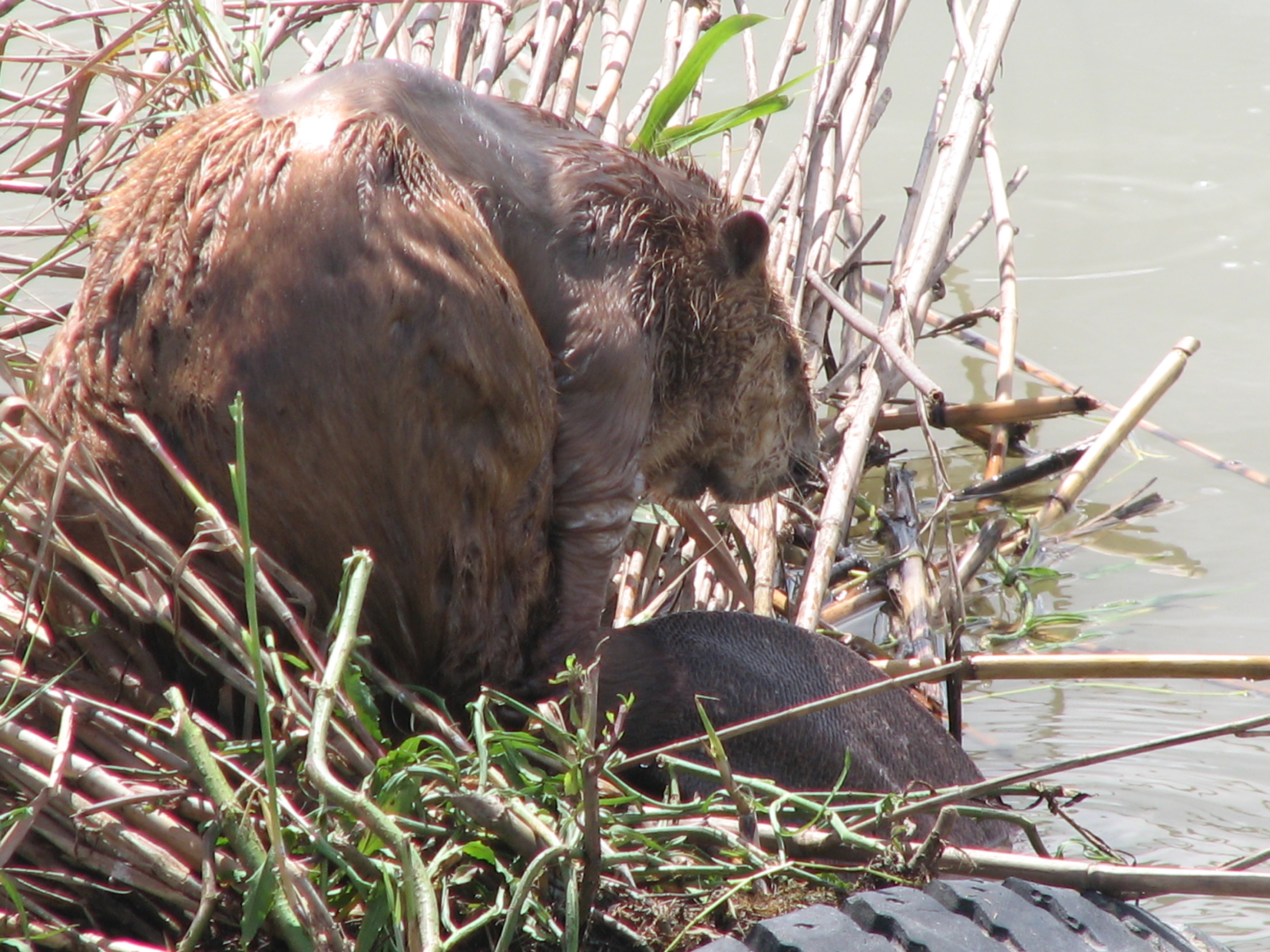
| This Bobcat jumped into the water, caught a duck, |
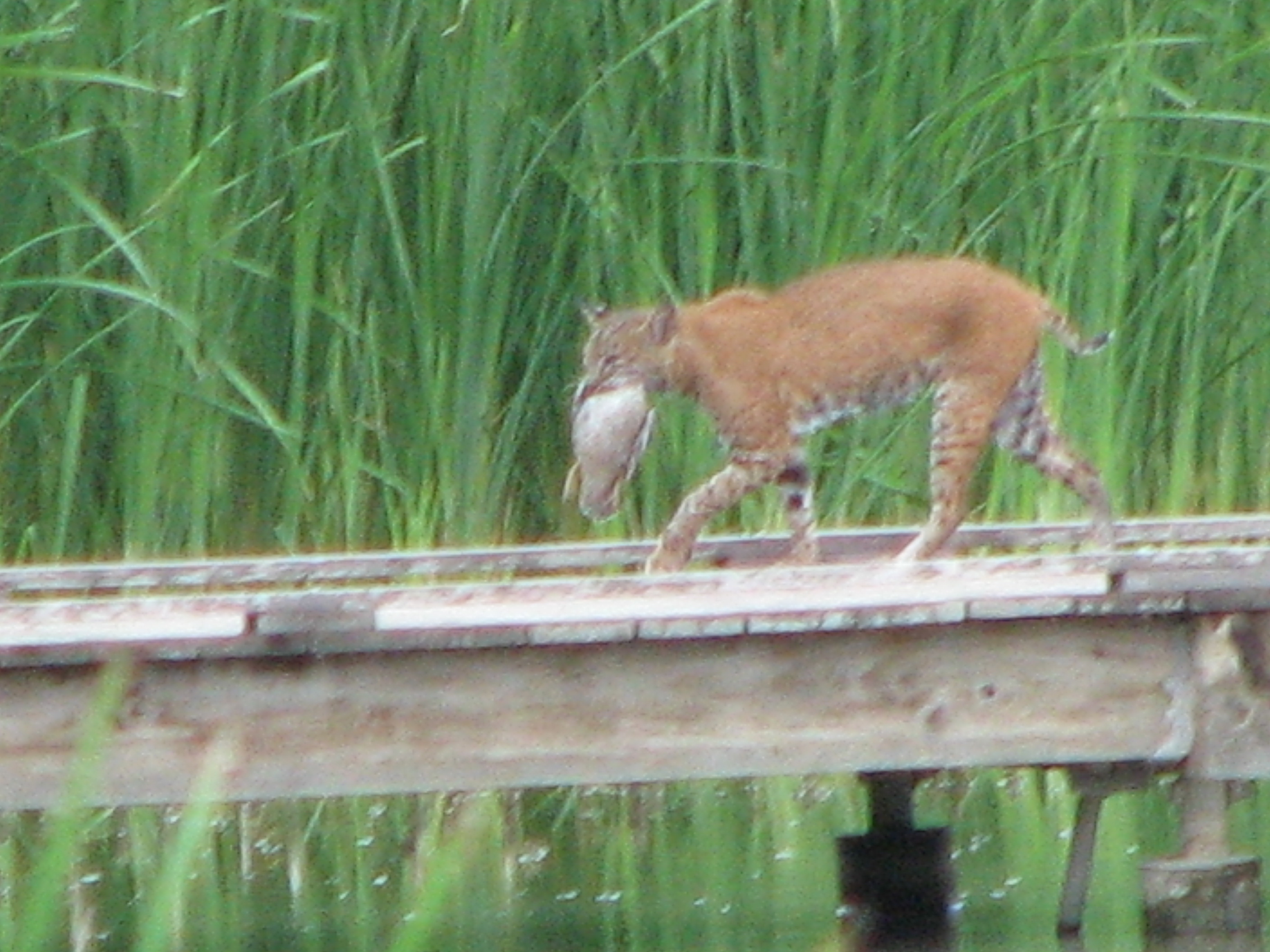
|
| jumped onto the boardwalk, all viewed from the deck. |

| This bobcat watched the 20 people on the Butterfly |

|
| Walk go by, 10' away, then went back to sleep. |

With over 500 bird species in the Valley (over 300 of them seen so far in Estero's short five-year history), 300 butterflies,
100 dragonflies, frogs, toads, huge numbers of insects, plants (both native and non-native), spiders and fish, we're
not even touching the natural wealth at the Park in this short blog. Stop out and visit. You are welcome to explore
on your own, or we do have programs where you can be accompanied by a Park Ranger to help you explore. 956-565-3919
or john.yochum@tpwd.state.tx.us
|
